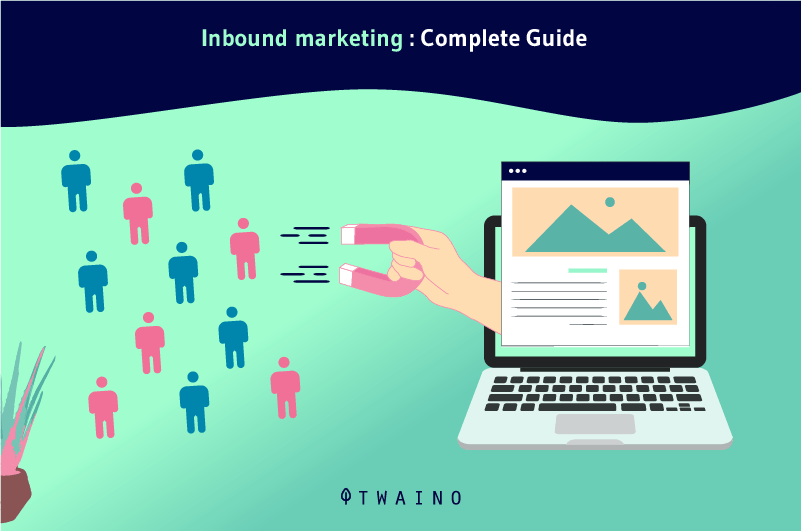Every year, brands spend millions of dollars trying to acquire new customers.
And for a profitable return on investment over the long term, brands should retain their new customers for a solid relationship.
All this involves a set of processes called inbound marketing or inbound marketing, which is a fairly modern and effective strategy for increasing sales.
However:
- 79% of businesses that have a blog report a positive ROI for inbound marketing;
- Inbound marketing costs 62% less per lead than traditional outbound marketing;
- Companies that use marketing automation to nurture leads experience a 451% increase in qualified leads.
In this article, you’ll find out everything you need to know about inbound marketing.
Chapter 1: What is inbound marketing and how does it work?
Let’s learn the basics about inbound marketing in this chapter.
1.1. It’s
inbound marketing Inbound marketing or inbound marketing is a strategy based on how a brand attracts specific customers and guides them through the process from their first contact until they become loyal customers.
This strategy is centered on:
- The consumer;
- Its needs ;
- His desires;
- And his path to purchase.
However, the method aims to identify the consumer’s constraints, that is to say his problems, by providing a solution with the aim of arousing his commitment.
To be clear, inbound marketing delivers high-quality content to its target audience to attract them, convert them, nurture them through the purchase lifecycle, and retain them at the end.
Content based on experiences and adapted to the target audience makes it possible to establish a connection between the customer and the brand in a very natural way without any act of forcing.
In truth, the focus is specifically on high quality content, but it should be noted that inbound marketing is a whole set of processes.
To sum it all up, the inbound marketing methodology is based on a series of non-intrusive techniques that help brands to:
- Drive visitors and traffic to their websites;
- Encourage these visitors to become customers by encouraging potentially interested contacts and with whom it is possible to establish a long-term relationship to take action;
- Automate the marketing process so conversions take less time.
It’s about inviting the customer to come to you instead of cluttering up their daily life with aggressive advertising.
1.2. How does inbound marketing actually work?
If you’ve taken note of what inbound marketing is, then you realize with me that staying relevant online remains one of the best options.
The question remains to know clearly how it works.
As we touched on slightly in the definition, inbound marketing generally happens in 4 inseparable stages:
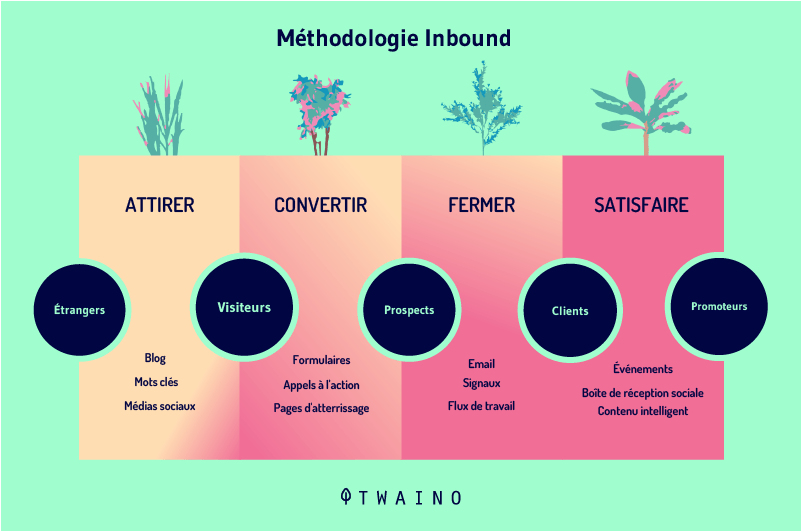
1.2.1. Step One: Attracting Leads
Inbound marketing works by attracting the right kind of traffic to your brand, the people who are most likely to buy what you’re selling.
You can attract these people by first understanding the behavior of your ideal buyers, these are your buyer personas.
Your personas are semi-fictional representations of:
- Who your customers are;
- Their goals;
- Their weak points;
- Their objections
- And their demographics.
A good persona means that you really know your customers, the ones you need to talk to.
At this stage, inbound marketing consists of targeting them through inbound marketing strategies such as:
- Content marketing;
- Social media marketing;
- And the keyword strategy.
You create valuable educational content that speaks to your ideal customers and answers their most common questions.
You share this content on the channels they are most likely to use. And you use keywords that they type in when searching for your type of business.
1.2.2. Step Two: Convert Leads
Once the attraction step has been successful, the next step will then be to convert visitors into leads with valuable, eye-catching content.
It can be:
- A case study;
- Or a newsletter in exchange for the visitor’s contact details.
Inbound marketing uses several tools such as calls to action (CTA) and landing pages to quickly convert the visitor.
We speak of a call to action when on a web page, we discover certain well-placed buttons that indirectly invite you to click to obtain an ebook.
Most brands use this method to get the visitor’s contact details.
Then, this contact information is ultimately used to interact with prospects.
1.2.3. Third step: Nurture the prospect
Once the contact data of visitors has been collected, the next step of inbound marketing will be to send them by email relevant and useful information relating to the purchase of a product or service. according to their interests.
Other types of information may even be sent related to what the user was investigating.
The techniques companies use today to complete this phase are known as lead nurturing and lead scoring.
- Lead nurturing: This is a process of enabling automatic email delivery of personalized information based on the information provided by a specific user and their behavior. ;
- Lead scoring: This involves measuring and quantifying the likelihood of a user being persuaded to make a purchase. Put more simply, it measures the degree of certainty of the buyer’s intention to buy a product or service and in turn manages to identify the changes that could occur with potential buyers.
At the same time, strategies for personalizing the content and elements that make up the website, as well as retargeting strategies, are applied.
It should be noted that thanks to cookies it is possible to track what the user has visited.
The collection of this information makes it possible to define the content, the personalized offers and the actions that will be implemented for each Internet user who visits the site.
You can ensure that a given user finds relevant and useful information on the Internet about what they are looking for.
1.2.4. Step Four: Retaining Prospects
The final inbound marketing strategy is the closing phase where an inbound sales process begins, which is responsible for improving sales results by guiding the buyer in finding the product or service they need. requires.
This phase is completed by the previous ones, because it is through them that customers are satisfied with the discovery of useful information.
At the same time, a retention process may involve the fact that some users do not actually become customers despite being interested in what you offer, but rather become your opinion leaders on the Internet in your favor.
1.3. Inbound Marketing vs. Outbound Marketing
Undoubtedly inbound marketing is a modern strategy compared to outbound marketing.
There are quite remarkable points of divergence between the two here:

Source : intechnic
1.3.1. Inbound Marketing: Benefits and Challenges
To be brief, the vision of inbound marketing is first to attract customers to your products and services. Here, your best prospects discover you by researching products online.
They start by looking for products, services or content to meet a specific need or solve a problem.
To this end, your content must explain how your products or services will solve their problems, answer key questions or satisfy their needs.
Overall, inbound marketing has several benefits that can help you determine if it’s the right strategy for your business:
- Inbound marketing isn’t invasive: Prospects can read your blog posts or attend a webinar at their convenience;
- Inbound marketing content is educational: The content is specifically focused on each stage of the sales funnel;
- Inbound marketing is quantifiable: You can tie each part of your strategy to a metric that’s monitored over time.
Your website and content are continually updated, so inbound marketing continues to attract qualified leads over the long term.
Besides the benefits, practicing inbound marketing can have a few downsides or negatives:
- Inbound marketing requires regular editing to ensure content is up-to-date to always meet the changing wants and needs of consumers ;
- In order to find the type or style of content that best suits your target audience, it is going to take enough time to test content that will encourage customers to convert;
- Inbound marketing requires a holistic strategy, which means you’ll need to purchase tools to help you implement integrated, multi-channel campaigns.
1.3.2. Outbound Marketing: Advantages and Challenges
Outbound marketing involves sending a message to a broader, non-specific audience in the hope of making sales.
This type of marketing supports the philosophy that the larger your target audience, the more likely you are to realize a significant return on investment.
Outbound marketing is often combined with traditional marketing by adopting traditional publishing methods such as:
- Direct mail;
- Billboards;
- Television commercials and radio.
Since these are untargeted posts, most consumers are often not interested in the product being advertised.
While watching TV or browsing a website, prospects are often interrupted by an ad recommending that they buy a certain product.
Even though outbound marketing is no longer an appropriate strategy according to many web marketers, it has its own advantages that we should not overlook:
- Outbound marketing increases brand awareness by the simple fact that your untargeted posts can reach profiles people who have never heard of you. Added to this are the profiles that you would have missed when targeting for inbound marketing;
- Outbound marketing can yield immediate results: When someone interested in your products or services buys immediately without any additional procedures;
Consumers are used to outbound marketing: Many consumers expect to find an advertisement in a print newspaper or on TV and are more likely to trust these advertisements.
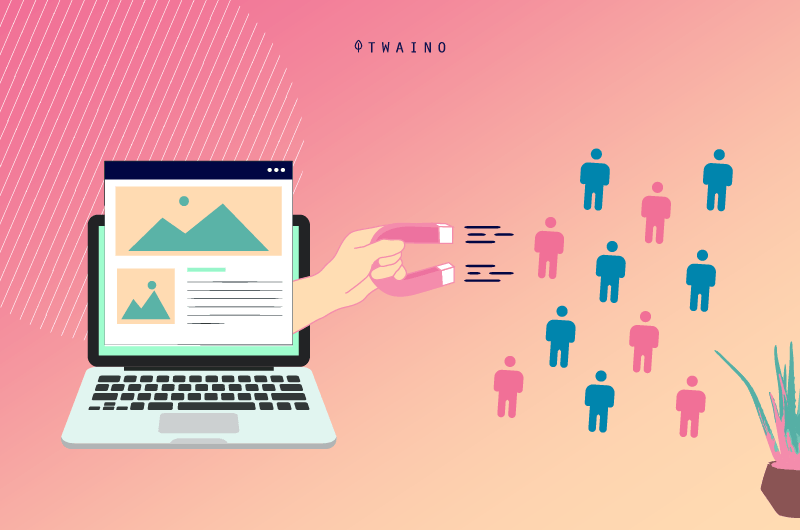
As advantages, outbound marketing also presents challenges for businesses to achieve:
- It is really difficult to personalize outbound marketing so that it is attractive and relevant to everyone it targets;
- It’s easy for consumers to lose interest in outbound marketing: Probably you’ve had the experience of turning off the television because of an ad that’s repeated too much;
- It is difficult to measure the effectiveness of some outbound marketing strategies like billboards;
- Outbound marketing is usually very expensive and its effect wears off in the short term.
1.3.3. What is the conclusion?
Broadly speaking, outbound marketing aims to address a company’s product or message to a larger, unanalyzed target audience, while inbound marketing focuses on a highly targeted approach.
However, there is a higher or lower likelihood of people converting through your outbound marketing efforts, but it often comes with a high acquisition cost.
Rather than shouting your product name from the rooftops and hoping for a few people to respond, inbound marketing content can ultimately be adjusted to appeal to your most suitable prospects.
| Inbound | Marketing Outbound Marketing |
| Here, the focus is on digital content as the first factor to solve the problems of highly targeted consumers. Here interactive means are used to present the content. These include social media posts, blogs, reports, webinars, etc. Here your message or product must be visible to specific consumers. The competition is pretty minimal. Here there is an option to publish your content to multiple channels. Measurable through digital marketing software | Here, a non-digital medium is used to present a product to a general audience with the aim of capturing the attention of a few consumers. Here we make use of traditional means to present the content to the public. These include advertisements in magazines, billboards, television, etc. Here, your ad needs to stand out among the millions of other ads consumers see every day . Here, it’s all about a linear strategy with limited channels. Difficult to measure the attribution of physical advertising |
Chapter 2: Why is inbound marketing important?
Nowadays, Inbound is a fairly effective and simple marketing strategy to implement. This has been confirmed by experts in the field and several other statistics.
Let’s discover very briefly 10 good reasons to start or improve your inbound marketing strategy.
2.1. Inbound Marketing Strategy Drives More Site Traffic
A clearly proven track record is the result of using SEO & Content Marketing.
These two fundamental elements form the foundation of the inbound marketing strategy.
Without any demonstration, you can already imagine the impact of this combination on a brand’s website.
First of all, natural referencing consists of putting into practice the right tactics in order to match the content of a website to the needs of users.
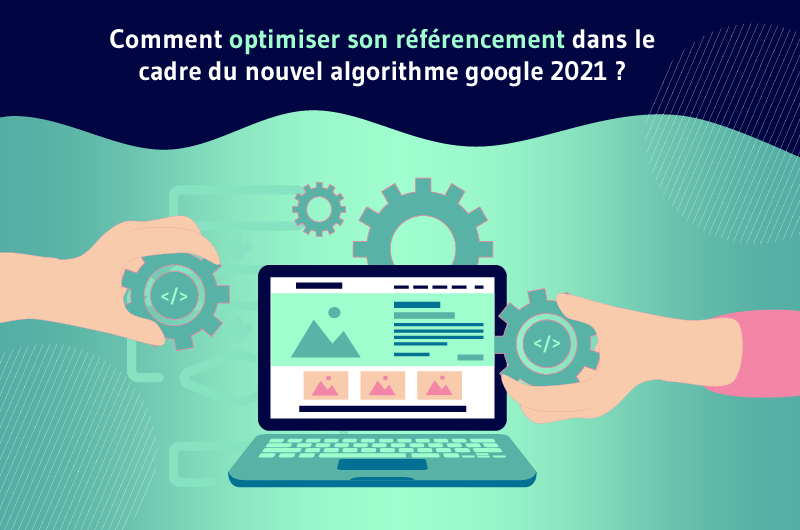
While good search engine optimization of your website’s pages is synonymous with high rankings, people prefer to click on the results that appear at the top of the SERPs.
Which would just mean that SEO alone offers huge chances to rank higher in search results and therefore huge potential to gain traffic.
Indeed, well-detailed content on a relevant topic attracts the attention of search engines and humans.
Since the objective of search engines is to provide the best answer to Internet users’ queries, your best content has a better chance of attracting traffic to your website.
And the more content you create, the more opportunities you have to rank for specific keywords and phrases.
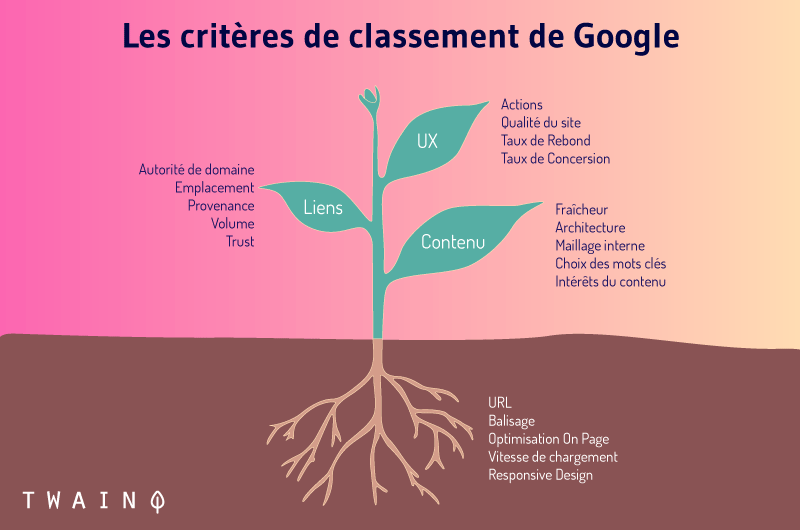
Since the pages of your website are ranked individually and not the entire website, your continued efforts to write a variety of content types will help you rank for more search engine queries.
When you rank for more terms, you can get more traffic.
2.2. Inbound Marketing Generates Quality Leads
We’re all used to how traditional marketing works and how a brand can use it to target its audience.
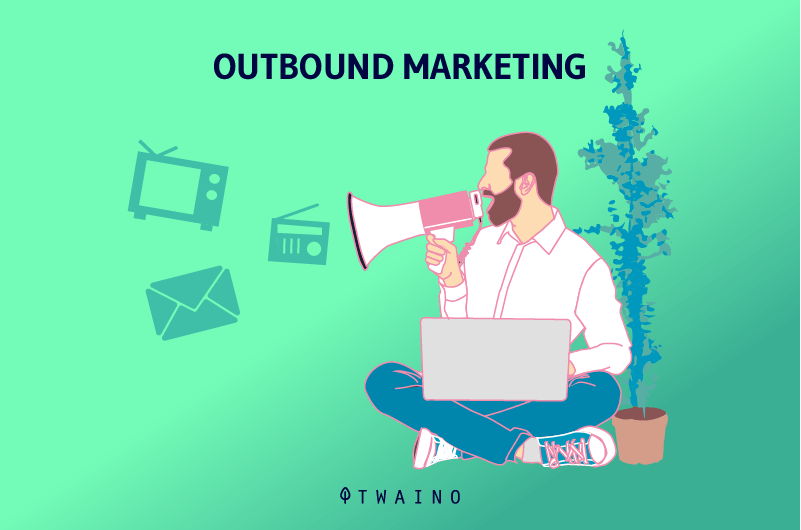
Generally, in traditional marketing, companies address their messages or products and services to their audiences through traditional channels such as:
- Radio stations;
- TV channels;
- And printed publications.
To do this, brands provide media agencies offering advertising space with information about their audiences in terms of age, gender and interests.
The biggest limitation of this strategy is that even if these media agencies know how to do their job properly, there is no reassurance that their audience can really be interested in your company’s products or services.
On the other hand, with inbound marketing, you are more likely to reach people who are more interested in your products or services, because in most cases, these people search the internet to discover your content that is relevant to them.
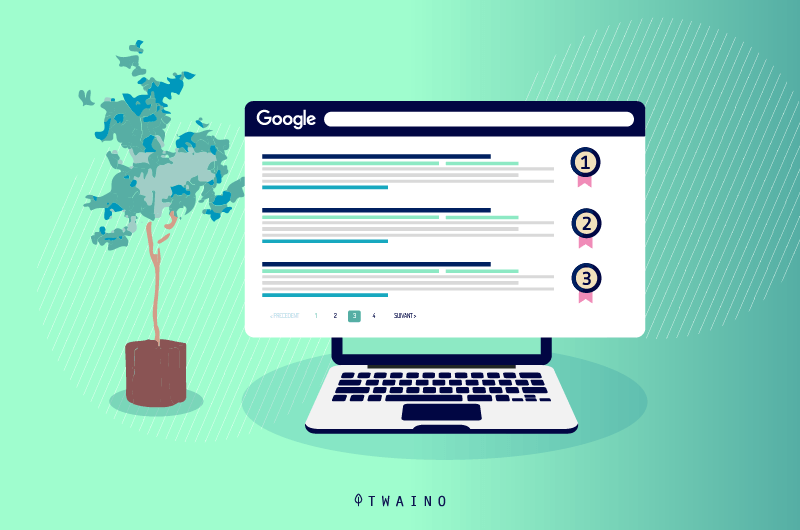
When you create content focused on your target audience, you can naturally bring visitors to your site who are interested in those topics.
It’s true that not everyone interested in your industry will become your customers, as some will hook up to your site just to read information on a specific topic.
Despite this, the percentage of people likely to become leads is much higher than with traditional ads.
Additionally, someone who discovers your website through inbound channels can explore your site and better understand who you are and what you offer before contacting you.
However, a prospect who found you through your inbound marketing to buy what you offer certainly has an interest in becoming your loyal customer.
2.3. Inbound Nurtures Your Leads and Customers
In most cases, only a small portion of your prospects will be able to make a purchase immediately.
This suggests that most of your prospects expect more information from you before deciding to become a customer. This is where your role of nurturing them comes from.
This is usually done by sending out chain emails to prospects, but research has shown that narrower targeting can have a greater effect.
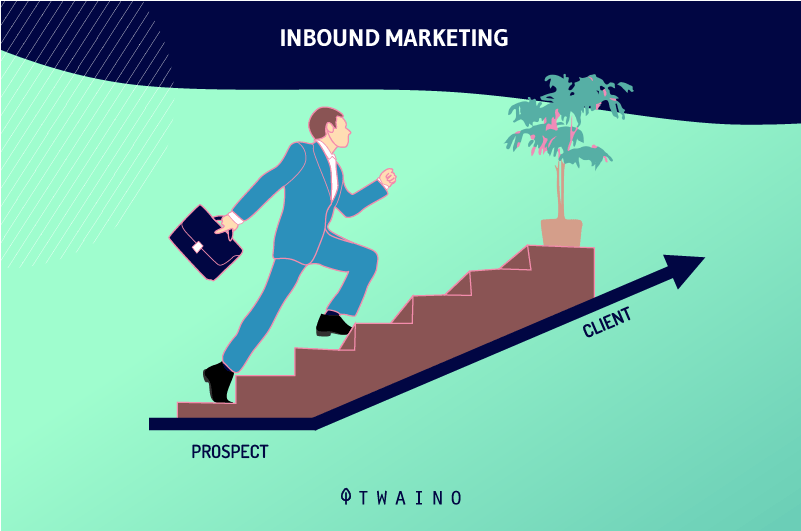
On average, potential clients receive several marketing emails before converting into clients, so it’s important to make sure they stick around long enough to be convinced that your services are the right path for them.
With a marketing automation platform you can monitor how long your prospects haven’t interacted with you and what they’ve responded to.
2.4. Inbound educates your prospects
Creating relevant and educational content for your consumers has many benefits.
On the one hand, as we just saw, it means prospects see your business as a voice of support and authority, building brand credibility.
If your free content is useful to them, then the content behind a form must be even more valuable.
On the other hand, it means that by the time your traffic becomes leads, they’re more likely to already know what you do and why you might be an asset to them, resulting in the sale.
If these leads become customers, they’ll be more likely to trust what you can do for them, which can lead to higher customer satisfaction.
On top of that, if your content is unbiased and educational, you can expect your visitors to have a better understanding of the industry or sector.
And certainly, they will have a better understanding of how your product or service can be the solution to their problem.
The more educated your audience, the easier the job of your sales team.
2.5. Inbound marketing costs less than outbound marketing
Here’s another good reason to prefer inbound marketing to outbound marketing, it costs less.A study Hubspot found that leads obtained through inbound marketing efforts cost 62% less than leads from outbound marketing efforts.
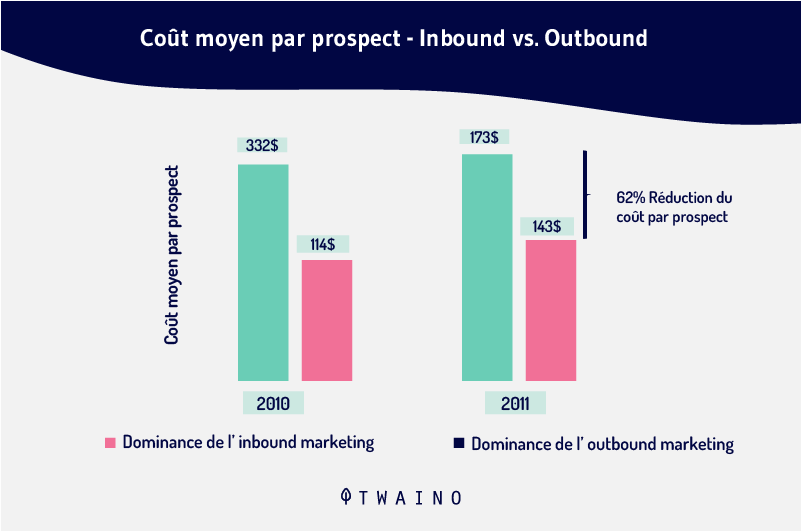
This statistic is inferred from the simple fact that when trying to run an ad on a popular website, a click requires a budget.
Contrary to this, there are several easy and free ways to generate leads in inbound marketing.
A popular way is to offer visitors something free in exchange for an email address.
Interestingly, this email address can then be used for an email campaign over time.
The best part is that this free offer of something to bring value to the prospect works in all industries.
We note this in illustration with Nancy Meredith, representative of the health company MesotheliomaHelp, who says :
”We are seeing more and more healthcare companies offering free e-books that provide information on the health benefits of their solution. It’s a way to build trust with customers and take them further down the sales funnel.”
2.6. Inbound Marketing Uses Automation
A Gartner study predicts that within two years, 47% of businesses will be using chatbots for customer service.
Other marketing automation tools also reduce the limits of marketers.
For example, how-to videos and chats with bots have become opportunities for companies to interact with prospects.
Another more powerful example of marketing automation in action is the customization of automated emails to offer personalized follow-ups in cases where customers have abandoned the process.
In a study by Experian, e-commerce customers who received multiple abandoned cart follow-up emails were 2.4% more likely to complete a purchase than those who had just one.
Bots themselves are becoming increasingly sophisticated as the algorithms that power them learn more and more about customer behavior.
It is seen that over the past few years, chatbot have become essential inbound marketing tools, with greater customization and functionality.
2.7. Using video by default has a potential upside
According to recent numbers from HubSpot, video has taken the lead over any other form of content as the dominant medium when it comes to content marketing.
The data clearly proves that using video content in customer marketing campaigns leads to high engagement.
Several other opinions agree with this formula that adding a video to emails has the effect of linking to a significantly higher click-through rate.
Along those same lines, Wyzowl found that 87% of marketers said video increased traffic to their site.
In addition to being a big business opportunity right now, many opinions hold that video content will truly be the next best tool for engaging with audiences.
And when it can work alongside other communication methods the advantage is even greater.
For example, by adding a personalized demo video in a chatbot with a customer, the marketing atmosphere becomes more interesting.
Moreover, thanks to the relative newness of this type of technology, it will impress your prospects while allowing them to easily become loyal customers.
Likewise, these new tactics of combining video with chat simply encourage marketers to apply their old practices, but in a new setting.
The world is changing and what your customers expect from their experience with your brand is changing too.
For this, businesses can apply video to other tools in other ways to increase traffic, leads, and customer satisfaction.
2.8. Inbound Increases trust in your brand
In the past, the daily life of customers was to call or physically browse a long list of stores to compare products and prices.
In this case, they are ready to make their purchase from the first supplier whose agreement suits them.
But nowadays, with just a click, anyone can access your product reviews and information about additional features that best suit their needs and requirements.
By being the one providing this information, you can take control of the conversation and be seen as an authoritative voice.
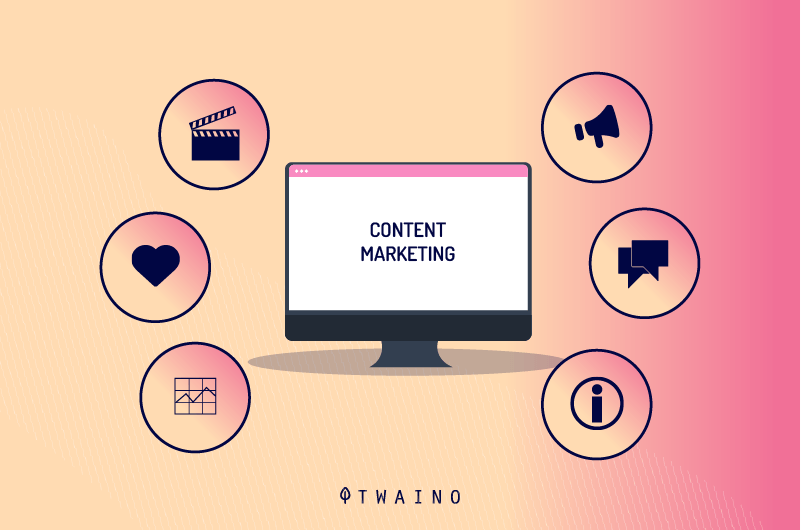
Inbound marketing is happy to talk about anything your prospects want to know, including prices, alternatives, comparisons, reviews, and even cons.
If you provide content that is relevant to the type of people you are selling to, they will not only visit your site, but they will return and share it with others.
Additionally, other sites may link to your website to share the information further. If this happens, you will also become more visible in search engine results, as Google sees you as a credible source.
When your site becomes a space where your audience knows they can access unbiased information, they’re more likely to trust you with their contact information and, ultimately, their business.
2.9. Inbound is Accessible to Businesses of All Sizes
We all agree that the budget that needs to be allocated to local outbound marketing strategies like radio or TV ads and flyer distribution can be beyond the resources of a small business.
On the other hand, a small business can already start an inbound marketing strategy for free by setting up social media profiles.
As the business grows, the scale of its inbound marketing efforts can become more ambitious, depending on the time and resources available to it.
This may include outsourcing or hiring a digital agency to:
- Create your content;
- Optimize your SEO;
- Put resources into creating more dynamic content such as video;
- Etc.
Because the traffic generated by inbound marketing is so easy to monitor and the costs of adding new content are low, it also gives you small businesses more ability to get creative with inbound marketing.
2.10. Inbound marketing saves you time
Inbound tactics are cost effective and can reduce overall marketing spend somewhat. They can also save you and your marketing team time, allowing for greater efficiency.

Marketing automation is on the rise. Outbound tactics don’t really lend themselves to automation, while inbound tactics do.
Where an email marketing campaign can be largely automated, chatbots can facilitate customer interactions 24/7, even when you are unavailable, responding to customer inquiries.
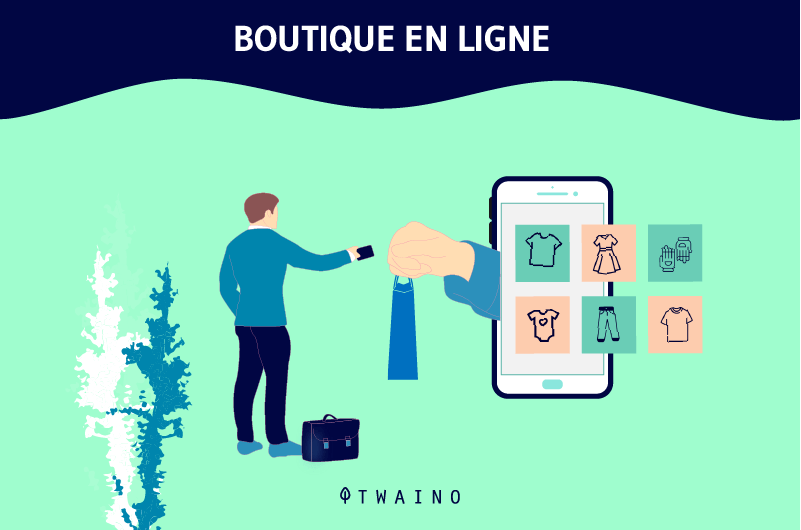
The accuracy of inbound marketing analysis can also demonstrate where it makes the most sense to follow up.
You can better prioritize your time and more easily select the most qualified leads.
Another advantage of inbound marketing is the immediate availability of data.
Just as analytics can show you the best leads to follow up on so you can prioritize your time, inbound metrics can show you exactly what’s working and what’s not.
Adjusting your inbound marketing strategy or tweaking an ad campaign for better results has never been easier.
But, with the insights provided by your metrics, you can make better trading decisions in real time.
Chapter 3: How to create content that attracts prospects?
In reality, inbound marketing cannot exist if we omit the content since it is the basic element around which all the strategies used revolve.
But before seeing concretely how to create content to attract traffic to your site, here is a list of the types of content that generate the most traffic:
3.1. 10 types of content that generate the most traffic
Let’s discover the list of 10 different types of content that work well for inbound marketing.
3.1.1. Infographic Content
In a 2010 study by Unbounce , it was revealed that organic search engine searches for infographics increased by 800%.

This statistic proves the great trend and effectiveness of infographic content to improve your search traffic.
Users nowadays place more importance on data, this would mean that combining data with a graph has a great advantage for your website in terms of organic traffic.
A marketing study shows that people are 80% more likely to remember what they have done and seen compared to only 20% of what they have read.
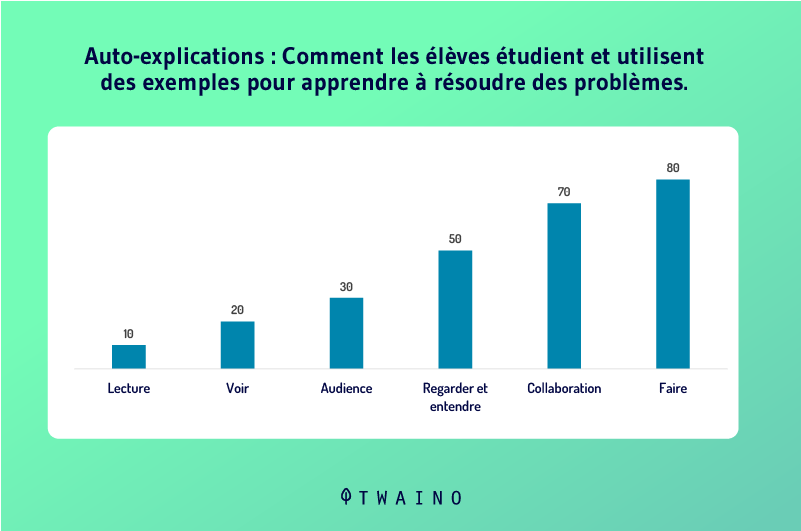
If people remember what they’ve seen on your site, they refer to it when needed.
Infographics help a lot in summarizing content using graphical representations and relevant data.
They make reading and sharing fun for readers because they combine interesting visuals with useful information.
In addition to useful infographics for the reader, many people like to share this type of content on social networks.
Infographics can act as a long-term solution for organic traffic, meaning results can be seen over a long period of time and forever when the content is regularly updated.
It is even more suitable to integrate infographics into your texts for your marketing campaigns. They illustrate and give more credibility to your ideas.
For Google, this means that your content is rich enough to respond more clearly to Internet users’ requests on the subject.
3.1.2. Video Content
With more than 3 billion searches per month on YouTube and the strong growth of Facebook Live, it is clear that more and more people are choosing to watch videos online.
Lyfe Marketing tells us that video is the best type of content marketing to reach and engage your target market, regardless of your industry.
So if you want to increase your audience reach, then save.
We also know that videos help deliver messages more effectively in a shorter amount of time.

Source : affde
In fact, people retain 95% of a message when it’s video content, compared to 10% when it’s text copy.
In truth, creating video content may seem a bit complicated for you, but the good news is that there are many online tools available that make video creation easy and fun for beginners.
There are also different types of videos that you can use for your content marketing, including:
- Product demo videos;
- Brand videos;
- Event or conference videos;
- Educational or practical videos;
- Videos of expert interviews;
- Animated videos;
- Live videos;
- Short excerpts from videos;
- Welcome videos;
- Slideshows;
- Presentation videos;
- Testimonials;
- Facebook Live videos to share an update or message;
- Etc.
Sometimes you will run out of ideas to create a video, it is advisable to somesimply reuse of your written content. It’s a popular, effective and easy way to increase your reach.
Videos can be used at all stages of your customer’s journey, from awareness to evaluation, and eventually the purchase of your product or service.
Upload to YouTube or Vimeo, then embed your videos on web pages, landing pages, sales pages, in emails, and on your social media profiles.
During their very first interactions with your brand, your customers might watch social videos, how-tos, or how-tos to learn more about what you have to offer.
It’s important to include calls to action in your videos to guide your customers on what to do next.
As they evaluate your brand, you can offer webinars, promotional videos on landing pages, or product demos to further enhance your marketing efforts.
When it comes to buying from you, you can work to close the deal by offering testimonial videos.
Hubspot also recommends using personalized videos and cultural videos that sell viewers on the quality of your product or service in their lives during the conclusion.
Of course, your customer’s journey doesn’t end there. Consider encouraging additional purchases or rave reviews from customers by using thank you videos or onboarding videos.
By engaging with the customer at every stage of their journey with your brand, you will also be working to improve their customer experience, which can have a huge positive impact on your sales.
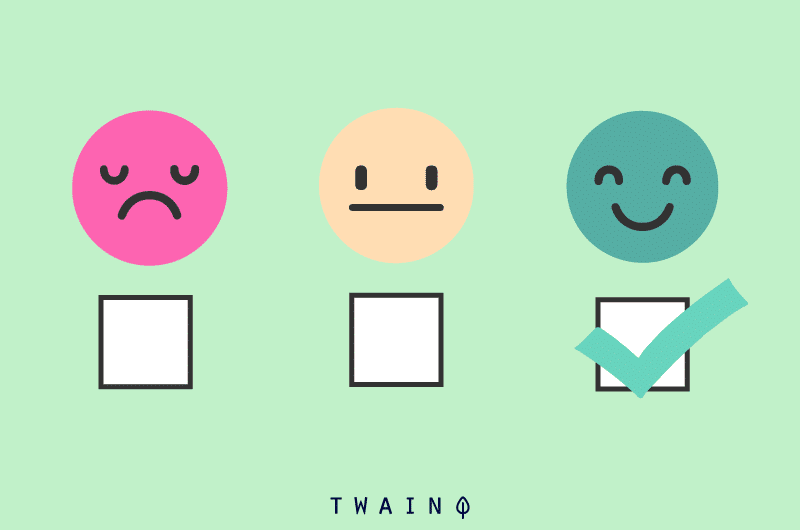
3.1.3. Ebook-type content
Ebooks are a practically long-form type of content and today constitute a powerful marketing tool to generate interactions.

Ebooks provide huge distinct benefits that make them an integral part of a thorough content marketing strategy.
For one thing, content is usually a great way for a business to establish credibility and expertise through short forms like blog posts.
E-books, in particular, allow you to design both the message and the expertise you want to present to your target audience.
The simple reason is that people who download e-books are actively seeking information or education.
For this, a good structuring and a good distribution of your message reinforce your credibility.
On the other hand, ebooks offer better value for money.
In reality, writing ebooks takes a bit of skill and time, but when you compare it to a complete print media kit, you’ll find that they’re on a shoestring budget.
Also, a common marketing challenge is figuring out how to get the content you create into the hands of the right people.
Most merchants offer e-books for download from a website in exchange for a user’s email address and other contact information.
You can also expand your reach by making your eBook available on Amazon.com or other major online digital self-publishing platforms.
It should simply be noted that some of your readers will download your books on their computers as others use smartphones and tablets to do so.
For this reason, be sure to also connect your eBook content marketing strategy to your email communications.
From another perspective, it is difficult to develop marketing strategies that audiences not only accept, but often seek out.
This factor is what makes e-books unique. People download e-books because they want to access the information presented there.
In fact, by offering your eBook for free, you give readers a high perception of the value of the content.
Then, after establishing credibility and potential problem solving, you subtly guide the reader to your business and solutions.
For example, companies that offer content marketing services would do well to trace their real-world benefits in a free content marketing e-book.
3.1.4. Case Study Type Content
With so many types of content out there, it can be really difficult to figure out the best options for engaging prospects and turning them into customers.
However, the case study is also a form of content that regularly drives traffic to your website.

Source : prismglobalmarketing
According to a study, 71% of B2B buyers at the awareness stage and 77% at the review stage confirmed that reviews and studies are content types that influence them a lot.
Whether customer testimonials exist in PDF format, on your landing page, or as a video, customer case studies give your personas proof that your products or services actually deliver results.
From there, a case study can be defined as a detailed story about something your customer has done or was able to achieve using your product or service.
Case studies go beyond testimonials, but rather serve as detailed and comprehensive content, while exploring a topic in its entirety.
Case studies often deal with a challenge or conflict, how it was addressed and resolved, and the positive outcome achieved as a result.
They themselves constitute research and data points that create and make a story more compelling.
According to some sources, 90% of buyers who read positive customer success content said it influenced their purchase decision.
For this reason, customer case studies are powerful tools that can help to:
- Position your business as a market leader;
- Guide your prospects in their buying journey;
- Educate prospects on the value and benefits of your product or service;
- Provide powerful social proof.
Also, companies should plan a good marketing budget to win customers, but luckily this is not the case when it comes to digital marketing, as case studies, for example, are inexpensive to produce.
Compared to a larger project like an explainer video, most of the work can be done in-house. All you have to do is take the time to interview, write and, in some cases, design.
Many marketers feel stressed trying to get a customer to agree to be featured in a case study.
Case studies describe the success of everyone involved, including how willing your customer was to get help.
Additionally, they can help with source backlink and anchor strategies, which has a positive impact on SEO.
Once you’ve published your case study, you can reuse it in different formats to extend its life.
Think of it as a year of research and the resulting blogs, videos, emails, and more as your term papers.
3.1.5. Book Review Type Content
Many people like to read books, so it might be useful to create content that is actually book reviews on topics related to your business.
According to a Pew Internet survey, 76% of American adults say they read at least one book a year.
Therefore, book reviews are a way to express your views on a book, discuss it, and share your expertise on the subject.
The idea behind this type of content is to help your readers choose the best books related to your industry, this would save them from spending their hard earned money on a poorly written novel which could be a waste of their time.

Successful bloggers and content marketers know how valuable honest book reviews are.
As you already know, most consumers like to trust their pair, a few customer reviews are enough to make them stick to their purchasing decision.
This is because no one wants to spend money on something that has no value.
Before buying a book, you probably look at the recommendations of someone you admire or an expert, whether it’s a new release from a popular author or something published on a credible platform. .
Authors know how much book reviews impact people and always try to get more eyeballs on their pages.
A Zendesk shows how 90% of a test group of internet users say positive online reviews influenced their decision to buy a product.
On the other hand, 86% say that negative reviews have also influenced them in making decisions about an article.
This shows the importance of pros and cons when writing a review:
Authors are always on the lookout for solid opportunities to get their books out there. So reviewing a book in a certain niche can easily create profitable industry connections.
When people perceive your content as valuable, they subconsciously tell their friends, family members, or fans about it.
So, by offering a preview of a book, many people may want to know more about the book or are interested in learning more about what it has to offer.
When you write an unbiased review of a book, highlighting the pros and cons, you’ll get people to buy it based on what you say.
But just like other types of content, your book review title should be compelling.
A captivating headline is what draws a reader’s attention to your post in the first place.
Book reviews are one of the best types of content that drive premium free search traffic to your website due to its unbiased approach.
3.1.6. Product Reviews or Tutorial Type Content Product
reviews are quite similar to book reviews, except that product reviews can encompass various aspects such as software, ideas, services, or even physical items.
Consumers always look for quality reviews on any product before buying it.
According to Bright Local , 48% of online shoppers said they read up to 6 reviews before they felt confident enough to trust a brand.
The most important rule is to be honest and be clear about the pros and cons of the product.
If you have tested or used the product you are reviewing, you are in a better position to write an authoritative review about it.
However, as good as product reviews are for driving organic traffic, this is a very traffic-saturated market, so you have to get creative with it.
Instead of just posting a stereotypical product review, create tutorials to show exactly how the product works.
If the tutorial or review you offer your visitors is easy to understand and implement, you will attract quality organic traffic which will increase your revenue.
It’s also a great way to get targeted leads to an affiliate program.
When you’re creating product review content, you need to have an assistant mindset, money shouldn’t immediately interest you.
If others learn from you, they will develop an interest and trust in you, which will eventually lead to sales.
3.1.7. White Paper Type Content
If your goal is to create a top quality link profile, it’s obvious to start with something worth linking to.
This means rich, high-quality content that will serve as a means for you to engage prospects throughout your sales funnel and to encourage several other actions on your website.
When it comes to citing these kinds of content, white papers find their way into the list.
These are usually quite rich resources that provide your audience with an in-depth look at the topics that really interest them.

White papers help boost your online credibility because of the pretty sufficient solutions they provide to customers.
42% of SEO leaders have confirmed that they have created white papers and 60% of them say they are the ideal content to earn links.
However, as with infographics, the quality of the content is arguably the most important thing.
Regarding its use, it is advisable to entrust the writing of your free bench to a digital agency, because it requires skills in web writing.
But when you choose to write your book yourself, here are some guidelines you should follow:
- The first thing you need to think about is what topic interests your audience and fills an urgent need. In fact, this is the first step to creating any type of content;
- You don’t have to emphasize branding content, because a white paper is a solution resource, not a brochure to advertise your brand’s activities;
- Strive to inform and convince your readers. Present information logically and objectively.
Your arguments should go towards your concluding argument. Claims must be well substantiated and illustrated;
- Include visual aids. Remember that charts and tables are also content that audiences love;
- Revise your content properly until it’s perfect in order to omit spelling mistakes and any twisty thoughts.
Fortunately, white papers and e-books are some of that valuable content that practically sells itself.
If you truly address an important need facing your audience, people are only too happy to share and link to your whitepaper.
If you want to build links through social media techniques, investing in a white paper as a key asset is a good place to start.
3.1.8. Webinar-like content
Webinars have become an increasingly popular way to engage with audiences and deliver content.
A much wider audience can be reached, as there are no practical or geographic restrictions on who attends.
There is an endless amount of content on the internet and you have to somehow find a way to stand out and be different and more useful to prospects than your competition.
Webinars may be the answer, as they allow you to present an unlimited amount of engaging and interesting content targeted to your audience and niche.
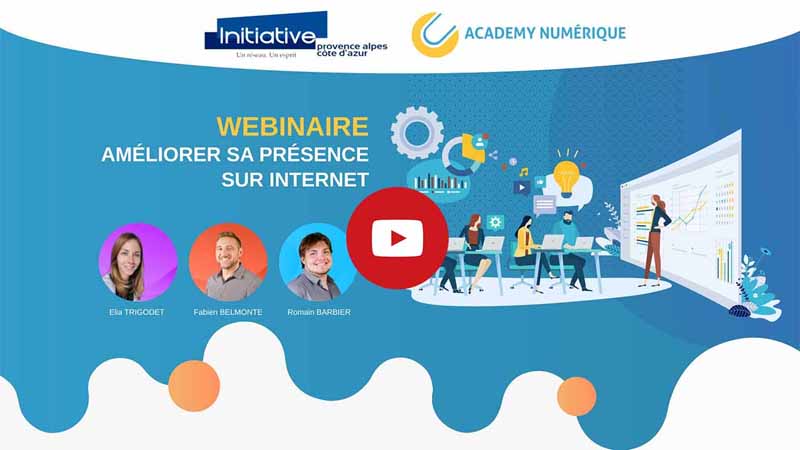
Source : academy-numerique
Webinars can also be as short or as long as you want, and therefore can be an effective way to deliver short messages or longer educational or training content.
Webinars can be an essential way to increase traffic to your website.
Webinars can be promoted through a variety of channels, giving you a variety of traffic sources, including:
- Social media;
- Email marketing;
- Blogs;
- Affiliates you can engage to promote your webinar;
- Etc.
All of these allow you to promote your site during and after the webinar, and drive valuable, highly targeted traffic back to your domain.
Webinars can be a very effective yet simple way to educate potential customers about your business.
They are content-driven and, when designed correctly, can allow you to provide unlimited value to your customers and prospects.
This valuable, highly accessible, and informative content attracts your target audience, and once they are impressed with all that you have to offer, they are much more likely to visit your website to learn more or respond to any calls for the action.
Webinars can be used as a very effective marketing tool that increases traffic to your website.
However, you need to be careful how you use webinars and make sure you don’t overload your visitors with content and videos.
One of the key aspects of using webinars for marketing is the title of the webinar itself, this is what will drive people to register, watch and engage.
The title should reflect the content but be interesting and creative to grab people’s attention.
Before the webinar, send several email and social media reminders to make sure people remember the day and time.
You can include links to your website so people log in and check out your site before the webinar starts, and getting the email addresses of those who sign up is very important to add them to your lists. marketing.
The webinar itself should be engaging, on-topic, and relevant to the audience.
There needs to be a clear take-home message that the audience can put into action after the webinar is over.
Expert speakers can be very effective in impressing your audience on any topic.
The more valuable the content and information, the more the audience is encouraged to visit your site after the webinar and become a regular customer, blog subscriber or visitor.
Keep in mind that if the content is of poor quality, attendees will have little interest in engaging further with your business.
If you can find a speaker who will engage and interest the audience, you will be known as the site that brought in the speaker.
If the webinar goes well, you are building a reputation for good quality webinars with great speakers and this will only increase traffic to your site.
It also increases the likelihood that people will return to your site to learn about other webinars you are hosting and who will be the guest speakers.
After delivering the webinar, you should have a recording of the session available for viewing.
Those who missed it will be likely to tune in in the following days to view the recording.
In addition, these archives can be used to engage long-term traffic.
You can also collect feedback from attendees and ask them to share links and reviews on social media.
A positive review from a previous attendee will go a long way in increasing traffic to your site and future webinars.
Encourage the public to leave comments and set up a rating system.
It’s also a good idea to email all attendees thanking them for their time and encouraging them to visit the website and contact you with any questions.
For those who registered but didn’t attend, send them an email with the recorded archive so you don’t miss the opportunity to re-engage those who didn’t attend the live event.
Every element of the webinar presentation, from planning to designing to promoting, must give satisfaction to the audience, this formula is sure to bring huge valuable traffics to your site.
3.1.9. Content for social
networks Social networks can be a remarkable way to circulate and facilitate the success of your content.
Social media gives you space to personally interact with a number of your prospects, thereby learning more about them.
When you create a social media content strategy not only can you gain a community of followers, but you will also have popular content ideas to build brand loyalty and increase reach.
Social networks allow you to have a conversation with your fans. They will be able to tell you in the ”comment” section how much they liked the content you post.
You can identify the content that has the most success in terms of generating traffic and shares within the platform.
Since social media potentially offers millions of visitors, it can be a wonderful place to increase brand visibility and reputation.
You need to carefully monitor your audience’s response to your articles and posts. Topics that receive the most support can be used as guides for creating social media content in future production efforts.
You can also listen to conversations happening both on and off your page to learn more about what interests your users and what they would like to learn from brands in the industry.
This will also be useful when developing an editorial calendar.
When you create social media content that is successful and popular content, you are able to dramatically increase your brand reach.
Creating and promoting content that people enjoy will attract likes and shares. To do this, you will first need a social media content strategy.
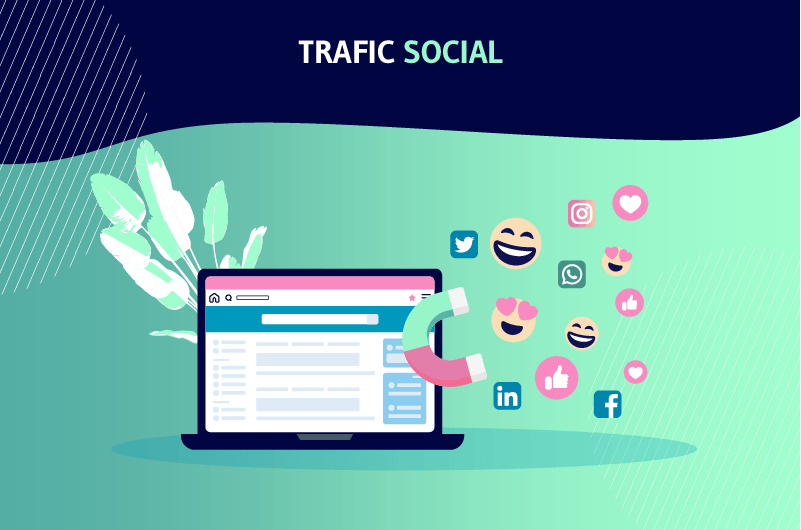
To start creating a strategy, you need to know who your audience is and what they are looking for on social media.
You will want to create relevant content that resonates with them. By performing keyword research through a platform, you can find the keywords to use on your social platforms.
Before you start posting, it’s best to create an intent model and content calendar to plan your posts for the future.
Once you’ve tested your content strategy, you can repeat these steps and modify the content to test other topics that might be of more interest to your audience.
When people promote your content for you, that article and your brand will then appear on the newsfeeds of all their connections.
Quality content will help you attract more followers and introduce your brand to more people.
As your community grows, you have every opportunity to engage with prospects and find out what they want to see from your organization.
3.1.10. List Type Content
People love list type content because man is lazy in nature and this type of content is easy to browse and digest.
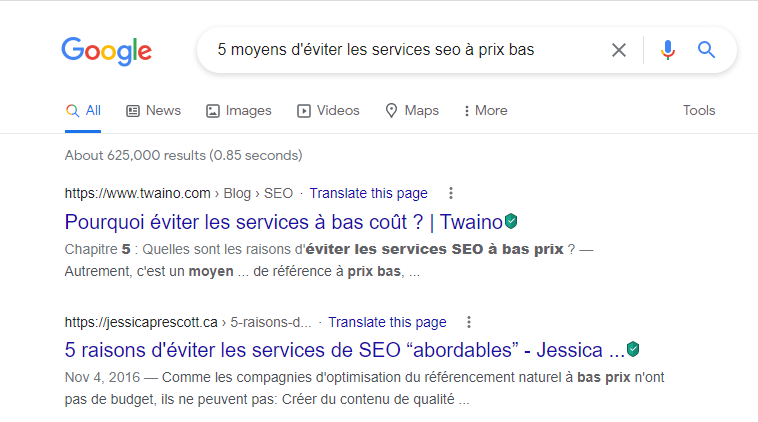
In his content ”5 types of content that attract the most backlinks” Neil Patel confirms that to-list content is number one in content marketing.
Even if you don’t have the ability to deliver the same results as the big brands, that certainly highlights their impact.
To give you an idea, here’s what their backlink growth looks like:
According to Patel, people love listings because:
- Listing content makes a specific promise;
- Listed content is scannable;
- Listed content invokes curiosity.
The advantage with list content is that it applies to virtually any industry.
Although highly shareable, lists tend to take less time to produce than many other forms of content.
However, before producing your content, the biggest question is what should the listing be about.
It requires a bit of keyword research or looking at Google Trends to find out what works best in your niche.
Remember, this doesn’t have to be about your product, as the purpose of listings is usually to gain shares, links, and brand recognition.
A list of why your product is better probably won’t get those signals, but can be very suitable for a sales page.
Consistency is key to most marketing efforts and this data combined with the raw numbers makes the listings a go-to, provided you have a rollout strategy in place.
As mentioned earlier, lists work well, but they need to be found first.
Simply launching a list without a strategy to present it to your target audience is not serving anyone.
A strong push on social media, through newsletters, or through advertising is mandatory for all but the strongest websites.
3.2. How to Create Core Content That Google Can Return to the Top of the SERPs
When it comes to discussing top ranks in search results for topics that your entire site is built around, creating core content should be your biggest bet. This is Angular content.
There is a lot of confusion about what the content of the cornerstone actually is.
For a lot of people, this is a mega post that links to your smaller posts on the same topic, like a resource page that has links to all of your posts on a topic.
Whether it’s a blog post, ebook, product review, or guide, content serves a vital function in creating a relevant, compelling, and useful cornerstone.
A cornerstone is something fundamental, essential and indispensable on which something is built or developed.
Customer content can be a 5,000 word guide to writing and selling an eBook or it can be an incredibly valuable infographic that shows trends in your industry, backed by research and data.
And when that content is written strategically and to standards, it’s more likely to rank well in search engines.
The key is to create compelling content that is worth linking to, then find a way to get the word out.
Finally, before we dive into the steps of creating epic content for your blog, let’s take a quick look at some of the benefits of creating these types of posts for your blog or website:
- They offer incredible value, resources and real solutions to problems your readers might encounter;
- Google loves these kinds of blog posts, so your basic content posts should rank pretty well in search engines;
- They can drive a ton of traffic, attract new readers, and boost blog engagement ;
- People are more compelled to share essential content on social media;
- They can naturally attract backlinks from prominent blogs and websites;
- They can help build credibility and authority for your blog.
Here are some useful ways to develop essential content to rank well:
3.2.1. Find the best keywords in your niche
Finding high value keywords refers to finding keywords with high monthly search volume and low competition. This is arguably the most important part of creating great foundational content.
This step should be given enough time to find keywords from your niche and related industries.
This way, you’ll gain all the best keyword opportunities in your niche to produce content that’s purpose-built to rank.
Choosing a good keyword is not a random thing, it all depends on:
- The size of your blog, do you get 100, 1,000 or more than 10,000 visitors per month?
- Your domain authority;
- And your ability to create great content for a certain keyword/topic.
Here are some rules to follow that will help you spot the best keyword opportunities for your blog:
- If you don’t have a lot of traffic, a 100 search keyword per month might be worth a shot;
- With 10,000 visitors per month, you may need to focus only on keywords with more than 1,000 searches per month;
- A keyword with a KC value below 30 is usually low competition;
- If your Domain Authority is 30+, you can probably rank for keywords with KC values in the 30s;
- Look at the KC values first, then look at the traffic to see if the monthly volume constitutes the time and effort needed to write a foundational article.
3.2.2. Write meta data correctly
Despite the multitude of debates that there are around what works and what does not work in SEO, no one has yet disputed the importance of using targeted keywords in your title tag. .
Search engines want to deliver relevant results, so your page title should prominently reflect the words used by the searcher.
But also remember, the title is a title. You must respond to the potential reader in the words he has chosen.
You need to use the right keywords to build a compelling title structure that promises to answer the exact question posed by the searcher.
And finally, by writing the perfect title, it is more likely that someone will just use your title for as a query, without a doubt, you will appear at the top of the SERPs.
Since the link’s anchor text is a component of a particular search algorithm, this can only help.
3.2.3. Outstanding Cornerstone Content
The question is, can a 500-word article rank well on its own for a competitive search term?
This is a no-brainer, because much of what determines a page’s ranking depends on the overall authority and age of the website it appears on.
And maybe for some topics, a short explanation is all that’s really needed from the experts’ point of view.
But if you have a newer website trying to rank for a competitive search term, you’ll need links from other authoritative sources to get there as soon as possible.
This means your content should be impressive, both in terms of quality and reach.
Develop a great multi-part tutorial. Answer the question much better and more completely than the competition, and there’s a better chance your effort will yield results.
3.2.4. Content Landing Page (SEO)
If you want to have ambitious reach with your content, it makes sense to make things easy for the reader from a usability perspective.
A landing page is designed to instantly communicate what is happening to the visitor upon arrival, and also acts as a table of contents via links to each section which increases clarity.
Here are some of the benefits of the landing page approach:
- Retention: Keeping a reader from hitting the back button is crucial for just about every aspect of successful grassroots content;
- Links: A visitor may be instantly impressed with your work and link to you based on the benefits and reach communicated by the landing page itself. The sooner you can link source potential, the easier it is for you to follow them.
3.2.5. Make your foundation article as valuable as possible
Your goal with each piece of your foundational content should be really ambitious.
In fact, the goal is to become the best resource on the Internet for your target keyword in order to answer searchers’ queries first.
Unfortunately, that means you’re going to spend a lot of time developing a single article.
In this case, your blogging schedule can be reduced to once a month and you can still generate more traffic than before, Google will be very interested in your content.
So, to make your content incredibly valuable, all you have to do is provide:
- Unique insights from your experience or things no one else is talking about is crucial;
- Actions your reader can take to implement the information you have taught them;
- Great examples and resources to make sure your reader understands your content. Think of videos, books, articles, courses or anything else that would be useful to you;
- Step-by-step processes that show your reader exactly what you did to achieve a specific result;
- Include as much relevant information as possible around your keyword
- . Relevant information over 1500 words, Google loves long content.
4. Optimize for relevant long-tail keywords
As you already know, each section or chapter of your article should be specifically designed to target related long-tail keywords.
Assuming your main keyword is “how to SEO”, you need to do extensive keyword research to find long-tail keywords related to SEO practices.
The goal is to insert them into your content as subtitles or the title that covers a section of the content.
So for example, you might find these SEO-related long-tail keywords:
- Learn SEO;
- Why do SEO;
- SEO in x steps;
- Etc.
It’s important to include each of these keywords somewhere in your basic article, either in the body or in a title.
3.3. What are the effective ways to distribute content to meet the real prospects?
Distributing content means advertising your content by any means and spending time updating your business profile on referral sites.
Your business probably has a social media profile and you share updates there as well.
The reason for any business to have a social profile for sharing content is simply to build brand awareness.
Content promotion helps you work less hard because you can use your existing content to retarget new audiences or repurpose it for new channels, without having to create new content each time.
Also, sharing your great content will help you focus on creating and maintaining strong content, rather than creating content just to get more content.
Content distribution has several benefits such as:
- Creating recognition and brand awareness: Your blog, social profiles and website are your own media, which means you have the ability to share whatever you want. Sharing your content on multiple platforms helps you increase your brand awareness because it has the potential to be seen by new people on each channel. In addition, it allows Internet users to find and share your content more easily;
- Conversation building: When someone searches for a product or service you offer on the internet, your business will likely pop up. This becomes even more apparent if you create and distribute content;
- Easier to share: One of the reasons you need to promote content is to make it easy for others to see. Content that is seen can be shared. If you share on social media, for example, your content is not only quick to view but also easy for others to share. A quick retweet can put you in front of a whole new crowd of people.
Before discussing the means of content distribution, you must ensure that your content is up to date. This means recycling old messages with new content.
Updating your content can benefit you in the long run, as it allows you to consolidate your old content with new relevant information to make it richer.
This means you spend less time creating content and your existing content remains potentially relevant, which can lead to higher rankings.
By focusing on your existing content, you will find it much easier to work on SEO clusters and ultimately improve your authority on certain target keywords.
You can take your high-ranking content and funnel it into more specific topics, revealing new content ideas for later.
That being said, the first step is to promote the content you have. Of course, you have a variety of options:
3.3.1. Social
networks On social networks, you have several options fordistributing your content:
- You can share directly on your page;
- You can share your content on someone else’s page;
- You can also share with the groups you belong to.
This means that you technically have an endless amount of ways to share on social media.
When it comes to content distribution, it’s really important to have programming tools like Buffer or Hootsuite.
In fact, social media is the easiest platform to immerse yourself in conversation, around your business and your niche, while allowing you to reach more people at once.
According to a study, 48% of consumers are more likely to make a purchase when your content responds to their queries on social networks.
While 46% love promotions and contests, 42% would convert faster if you provide educational content.
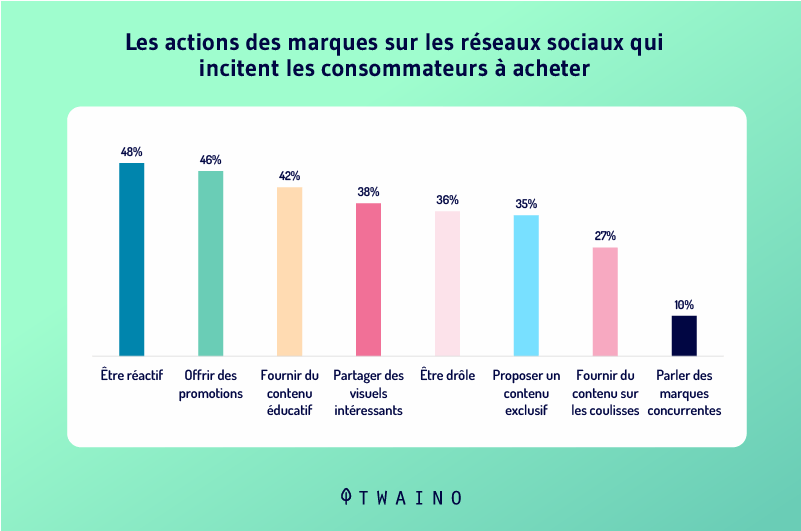
On top of that, Facebook was the top social network in the world with over 2.2 billion monthly active users.
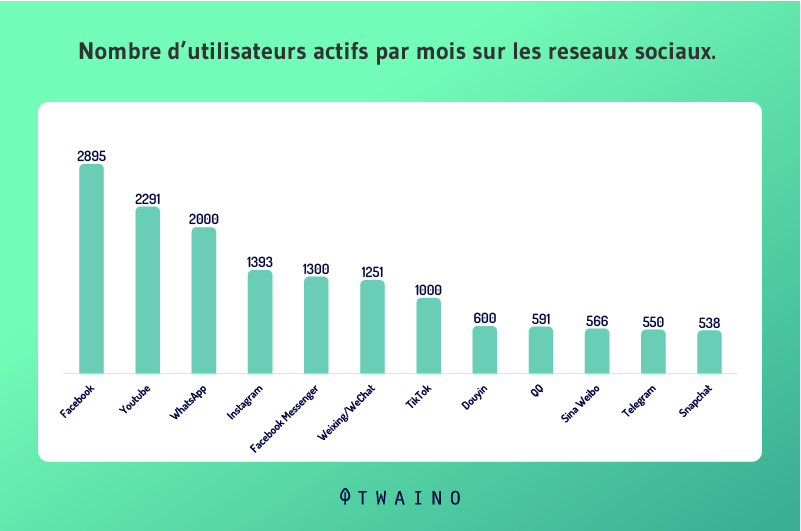
As we said above, networks are a potential opportunity to distribute your content more easily.
For example, most of the content that has been very successful owes its virality to social networks.
To do this, here are some social media promotion tips:
- Target specific people with mentions and tags;
- Tweet using a quote from the content;
- Cross post, but change the message for each platform;
- Tag relevant businesses or people when you can.
3.3.2. Email Distribution
Social media is arguably the perfect medium for content distribution, but when you believe that people who have already shown interest in your product may be interested in your new content, make use of email.
You probably have a newsletter or at least some sort of email drip campaign, or maybe even just email receipts.
No matter what type of email you send, you can afford the chance to share your current content.
You may have seen some people share a recent guide or webinar in their email signature.
The simple reason is that people read your emails, especially when it comes to confirmation emails and receipts.
Newsletters, in particular, are a great opportunity to share your content. When you take, for example, a newsletter that you’re subscribed to, you’re going to notice that it probably has the main post and then some relevant articles linked or maybe even listed at the very bottom.
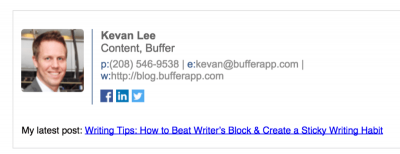
Source : valchanova
Readers may not click on all links, but they may be intrigued if something catches their eye.
When promoting your content through email marketing, it’s essential to make your email subject lines compelling so that the recipient actually opens and reads your message.
Keep the body text of your email concise and be sure to include a clear CTA with a link to your content.
Here are some opportunities to share your content by email:
- Newsletter;
- Drip campaigns;
- Email signatures;
- Confirmation or thank you emails;
- Product update.
3.3.3. On your blog
Your content needs to be hosted somewhere, and your blog is probably the best place for that.
Your blog is a perfect section of your website to put online:
- Articles;
- The white pages;
- Electronic books;
- Newsletter subscription forms;
- Etc.
Also, it is important to note that you can share other updates on your blog, such as new services or products that are about to be launched.
The trick is to make your blog as relevant as possible by keeping your posts up to date or posting them regularly can help.
No one wants to land on a blog and see a last post date from six months or more ago. Keeping your content fresh can be enough to get people to redistribute it.
You will notice that many successful blogs recycle their content and update it with new stats, this allows them to maintain or improve their rank in the SERPs.
Part of that is just updating and changing the date you make changes. This can help your old content continue to rank and possibly go viral.
After all, it’s your evergreen content that makes money. These timeless pieces are the ones that will stay shareable and drive traffic.
Another great way to promote content is to write a summary. Those you contribute to are likely to share and even link to your content in the future.
Which is a great way to build your backlinks and promote your content.
Remember that people can subscribe or bookmark your blog, so updating it regularly with new content will keep people coming back.
Here is a summary of what you can do:
- Update outdated information;
- Ask people to subscribe;
- Promote guest post content;
- Write a summary
3.3.4. With a rewards or referral program
, getting people to share your content can only likely increase your share rate.
You can spin it in different ways to promote your content and get people to share it.
For example, you can host a webinar and ask attendees to also recommend it to a friend.
This could get them both a free e-book or even some kind of discount.
You can simply ask people to recommend others to subscribe to your newsletter.
In most cases, a subscriber would see the benefit of referring a colleague to your newsletter if they find it interesting and informative enough. Just ask.
Promoting content in this way helps you reach a group of individuals who might turn out to be your best customers.
After all 84% of people trust recommendations from people they know. Which makes it the most influential form of advertising.
In summary, here are some ways to reward your content:
- Ask people to refer friends to your blog;
- Ask people to share your content with others;
- Offer an incentive to share.
3.3.5. Online Communities
Besides social media platforms, there are a multitude of different online communities.
You can also use this to your advantage to promote your content.
Sites like Quora, Growthhackers and Reddit, for example, give you another opportunity to share.
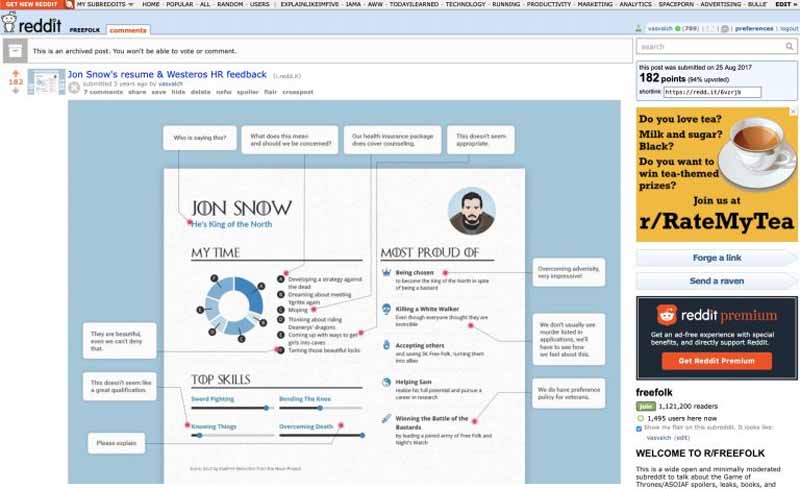
Source : valchanova
However, there are limitations for these sites. Quora, for example, is not okay with you being overtly promotional.
You’ll need to turn your content into thoughtful threads, like answering people’s questions and then linking to your content.
You can even turn to posting content on sites like Medium, where you can essentially have a second blog for your content.
Online communities worth sharing your content include:
- Quora;
- Medium ;
- Reddit;
- LinkedIn;
- Sharing slides;
- Youtube ;
- Growth hackers;
- Etc.
Chapter 4: How to convert prospects into customers?
Imagine the feeling you can have when you work hard to attract a prospect but end up leaving you for the site of one of your competitors to make a purchase.
This is a common situation, and sometimes there is no relevant solution.
Despite our best efforts to retain prospects throughout the buyer’s journey, some end up abandoning the journey.
It becomes even more awkward when you already manage to capture a prospect’s attention until the end, but they let you down on the way when it comes to closing the deal with them as new customers.
To avoid these kinds of frustrations, it is possible to convert more prospects into customers with the right tools and tactics in place.
The trick is to be mindful of how you approach marketing, so you can nurture and sustain customer engagement throughout the process.
In fact, these are simple facts to put in place but in a strategic way. And for that, here are some of our tips:
4.1. 5 tips for converting prospects into customers
4.1.1. Tip 1: Offer a free trial
When it is possible to allow your potential customers to consume a portion of your product or service for free as a trial, do not hesitate.
This way of hooking potential customers becomes even more interesting when you are in the software industry.
You can use this free trial to show how awesome your product is.
The idea is to get your customer to realize the value your product brings during this free trial. Once you do that, it will be easy to sell the product to him.
In terms of trial length, there’s no hard and fast rule, but generally speaking 7-14 days is a time frame that seems to work for many companies.
Now, you might think that extending your free trial to 30 days will give your users more time to try out your product, but that’s not necessarily the best solution.
When you keep your trial short, you motivate your users to try your product as soon as possible.
On the other hand, if your free trial lasts for an entire month, your users might put off exploring your tool because they know they have plenty of time.
If you really don’t feel comfortable limiting your free trial to 14 days, here’s another option you can consider:
- But use a live chat tool or email campaign to contact your user once their trial is over, and ask them if they want you to extend their trial;
- It also gives you the opportunity to chat with your user, you can find out what they liked or disliked about your tool, and potentially sell it on a paid account.
4.1.2. Tip 2: Follow up on leads
Another tip that will help you skyrocket your conversion rates is to simply keep following up.
It’s still worth diving into, as many sales reps underestimate the time and effort they need to spend on cold calls and follow-ups.
Just to give you an idea of what it can cost in time, here are some statistics:
- It takes an average of 18 calls to get in touch with a buyer;
- 60% of customers say ‘no’ four times before saying ‘yes’, but 92% of salespeople give up after not being successful on their fourth call.
The question remains how many times you should call your prospects before giving up.
In truth, there’s no magic number, but it’s a good idea to keep calling and following up until you get a clear “yes or no” answer from your prospect.
4.1.3. Tip 3: Establish a next step
It is really important to always establish a next step when you manage to establish contact.
In fact, the idea in inbound marketing is to get your prospect to commit to an action, regardless of its size.
Once you do that, you can keep moving them down the funnel, and there’s less chance that the follow-up won’t turn out well.
Now, it’s important to keep in mind that the next step you need to establish should vary depending on your prospect and their background.
In other words, you need to act on the prospect’s buying decision based on the situation.
Say you just got your very first phone call with a prospect, who is now a prospect.
If this prospect seemed eager to work with your company and you have his confirmation to make a decision in the next few days, it is from this moment that you must work better.
From this moment, you can choose as your next step to have a face to face meeting with him.
Alternatively, you can take a softer approach and simply ask for your prospect’s email address to send them relevant case studies.
4.1.4. Tip 4: Understand the objectives of prospects
To convert your prospects quickly and effectively, you must also think about the objective of each of them.
In reality, when talking about the objective of your prospects, it is not about the standard KPI objectives related to the company.
Here, it is a question of digging deeper and also discovering the personal objectives of your prospect.
For example, your prospect might be a marketing manager who just had a baby. He wants to be able to spend his weekends with his family, and to do this, he must train his team to work independently, that is, he will delegate tasks.
Once you know this about your prospect, you will find it easy to get them to buy your product or service.
You can tell them that your tool is designed to empower marketing teams and is great for managers who need to delegate more effectively.
In this case, you can highlight the fact that your tool allows users to generate reports and graphs with a simple click of the button.
Here, you’ll be telling your prospect that they’ll never have to manually analyze a campaign again.
4.1.5. Tip 5: Use the power of storytelling
When it comes to making a sale, storytelling is incredibly important. And there’s a simple reason for that.
While we believe that we are entirely responsible for ourselves and that we can control ourselves, the fact remains that we are largely guided by our emotions.
In fact, 95% of cognition happens outside of our conscious brain and inside of our subconscious and emotional brain.
So, bringing this back to B2B selling :
- When you use storytelling techniques, you’re essentially tapping into your prospect’s emotional brain;
- And it allows you to sell more effectively to your prospect.
Just tell them stories about how your product has changed the lives of your other customers.
4.2. 5 tips for converting prospects into customers
4.2. 1. Engage Prospects Wherever They Are in the Customer Journey
As marketers, we have the ability to find and engage prospects early on before they become active buyers.
These prospects will not convert into customers right away, it will really depend on the relationship you have with them and the trust your brand inspires.
When you have both of these up-to-date, you can guarantee that you’re more likely to do business with them once they’re ready to buy.
To do this, you must adopt a personalized omnichannel approach that takes into account:
- The interests of your prospect;
- The buyer’s stage;
- And the weak points.
Use each of your marketing channels to provide your users with relevant content that positions you as a leader in your industry.
In addition to building trust in what you do, it helps your customers get closer to decision-making.
A better way to start implementing your education efforts is by segmenting your audience into groups based on the previously mentioned categories and entering them into automated campaigns.
A marketing automation platform like Agir facilitates the process by automatically entering each lead that matches a specific criteria into each respective automated program.
Once your prospects are assigned to a campaign, all you have to do is nurture them with:
- Information;
- Content ;
- And recommendations that match their interests.
This increases their enthusiasm and their confidence in your brand, product or even your services.
Automated nurture campaigns also help drive consistent traffic to your website, allowing you to provide a personalized web experience while they browse to increase your chances of success.
These website personalization tools should help you easily track user behavior to provide intelligent content recommendations that match the current stage of your prospect’s buying journey.
This saves your customers from spending countless hours trying to find the information they need and saves you the guesswork.
Using a variety of channels to provide customers with relevant content that matches where they are in the customer journey is key to keeping them engaged throughout the buying cycle.
This tactic will help ensure they remember who you are, allow you to build a good foundation for a lasting relationship with them, and equip them with the resources they need to make a final buying decision.
4.2.2. Have a solid marketing strategy in place before you start executing
it In today’s competitive marketing space, the days of looking to stretch your efforts and expecting the best from your marketing efforts are over. .
To convert more leads into customers, you need to come up with a fairly thoughtful strategy that lays out your different ways to capture customers’ attention, what it will take to keep them engaged, and what kind of results you should expect.
When developing your strategy, consider the profiles of your potential customers and how each can benefit from doing business with you.
For this, it is advisable to identify the different communication methods and messages that really highlight your products as well as their features that your prospects will probably find the most appealing.
Using this information, develop a go-to-market plan that outlines how you plan to engage these prospects at each stage of the buying journey.
For example, depending on what you sell, targeting your customers by industry can be a good place to start.
Consider how these prospects are more likely to consume information and use these channels to deliver relevant content that matches their industry language and common issues.
4.2.3. Make sure you have the right content strategy in place to attract leads
We’ve talked about good content in inbound marketing, but we haven’t really mentioned the impact it can have on the backend.
Identifying and developing quality content takes time and effort.
Unfortunately, many marketers don’t realize that they need to develop specific assets before they actually need to use them for a campaign or other marketing efforts, such as prospecting for customers.
As a result, they often end up switching methods or waiting for a specific article to be created and approved before presenting it to their target audience.
Either way, they are more likely to lose their leads to a competitor willing to deliver the right content to their prospect at the right time.
Developing a robust content library that considers multiple product lines, services, and features at each stage of the sales funnel can help you better influence once the decision-making process is underway.
When creating content, consider each of your customers and their stage in the sales funnel, and create a variety of assets that address their issues, interests, and help them make a final decision.
If you already have ready-made content, you can be proactive by working with your team to identify content gaps that need to be filled.
Over time, work to meet those needs so you’re prepared with the right content to engage your prospects at all times.
4.2.4. Strategically place calls to action
A few adjustments to your landing page are enough to considerably increase your conversion rate.
Landing page optimization is one of the easiest ways to improve your website’s performance.
Sometimes all it takes to get a customer to buy is to make a small tweak to a button or tweak a headline.
4.2.4.1. Try it for free
The first thing to know about landing pages is that they should convey a call to action, your page should create a sense of urgency.
Using persuasive language can stir consumers’ emotions and compel them to take action. You will need to provide full details of the action to be taken.
If a visitor dares to click on a button that says ”Get your free here”, then they really need you.
That’s why you need to make sure the button takes them to a page where they can actually get their eBook for free.
Some marketers create a deception by creating buttons that redirect visitors to a page unrelated to the button they clicked. This only frustrates people and makes them not want to stay on your site.
Instill confidence in customers by being sincere in your calls to action. Track and deliver what you promise customers.
4.2.4.2. Make it clickable and colorful
When creating calls to action, use clickable and eye-catching images to direct people to your landing pages.
It’s good practice to make an entire ad image clickable, it reduces confusion about where to click.
If your images are interesting enough, people won’t be able to stop clicking on them. It’s also good to use a consistent visual style between the clickable ad image and your landing page.
The color is quite important. Make sure there is a sharp contrast between the words and the background on which they are placed.
Colors should have meaning, if your call to action button says something like “Save money now” it would be a good idea to use a green color so people subconsciously associate it with the silver.
4.2.4.3. Ensure happy landing of customers
Arrange your landing page layout to be simple and well organized.
Your most important information should be placed at the top of the page. Visitors shouldn’t have to use the scroll bar to find your most valuable content. Strategically place your buttons in easy to find places.
People hate wasting precious time looking for stuff. So make it as easy as possible for your customers to find.
Don’t force them to go looking for it or they might just use their back button.
From time to time, check the functionality of your buttons to make sure they are pointing to the correct locations.
Again, consider the frustration factor. People have little tolerance for broken links.
Preserve your professional reputation by maintaining connectivity to all links. Also monitor the effectiveness of your calls to action.
If a call to action isn’t driving traffic, replace it with a different one. Experiment until you get the results you’re looking for.
4.4. Leverage your data and insights to optimize your efforts
When you regularly launch new campaigns but see no improvement in engagement rate, you need to ask yourself if you are really using your data and insights to optimize your efforts. Simply reviewing your previous results allows you to identify what went wrong so you can better adjust your marketing strategy in the future.
A good and simple way to do this is torun A/B tests of your marketing efforts.
Testing the best performing subject lines, CTAs, and pieces of content allows you to improve your marketing to get better results every time.
The more engaged your audience is at each stage of the sales funnel, the more likely you are to convert them into loyal customers once they reach the finish line.
Chapter 5: How to Nurture Prospects?
5.1. What is lead nurturing?
Lead nurturing is a set of practices aimed at creating a solid relationship between the brand and the prospect by guiding them throughout the buying process.
The goal is to make your prospects understand that you are the perfect solution to their problems.
While it’s good to show them the product, it’s even more important to make them actually feel the need to consume it.
Take a look at this basic example of lead nurturing:
Gédéon, founder of the company Biotog, which specializes in marketing organic products, signed up for a free cheat sheet on driving traffic to his website.
Despite entering his email address, this gentleman is still cautious because he does not know who he is dealing with.
After receiving a report by email, the quality of the information provided began to interest Mr Gédéon, the information on SEO in particular.
The next day, another email message proposed to Mr Gédéon to submit the URL of his website in order to receive a report of his complete audit.
In fact, he hadn’t finished thinking about the information that impressed him in the first message so that we added a second even more interesting one. It started by bringing Mr Gédéon closer.
Without hesitation, he submits his website to the audit and receives the report in two days later which provides all the details of the problems that Mr Gédéon encountered with his website.
In that message there was a link to a webinar that he actually ended up watching. At the end they are asked to sign up for their flagship tour.
After clicking on the buy button, he realizes that the course was $2000, and there he decides to wait.
The next day, he receives another message which answered practically all the questions he could ask himself these last hours. Mr Gédéon finally buys the course.
The agency offering the service knows that if the Biotog founder clicks the buy button, but doesn’t complete the deal, he’s definitely interested in the product but the cost may be his real concern.
Using their behavior-based email software, they sent him a pre-written email answering general customer questions.
The last question was about price, and they provided a link to pay in installments.
It should be noted that if Mr Gédéo was not fed, he was certainly not going to become a customer.
5.2. Why should you nurture your prospects?
Businesses need to make sales and your potential customers need to know that you are the one who can deliver results.
Customers today are naturally skeptical and won’t trust you until you give them a good reason.According to Oberlo, a prospect will open your welcome email on average about 82% of the time, but they will only open your other emails on average about 21% of the time.
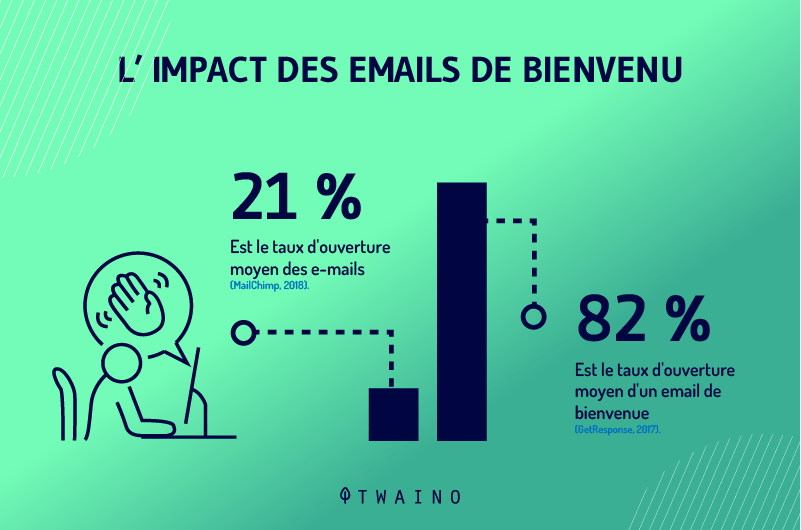
This stat simply says that potential customers are more likely to loseinterest in your product if you don’t nurture them from the very first email you send them.
In fact, people change their behavior and according to MyEmma, 47% of nurtured leads buy more premium products than unnurtured leads.
Lead nurturing is vital, and if you don’t nurture it, you’re heading for failure.
5.3. What is a lead qualification?
Lead qualification is a practice that allows you to distinguish potential customers who are most likely to purchase your products.
For example, you know that hot leads and qualified leads are more likely to buy, so they will be considered important opportunities when qualified.
On the other hand, cold leads are unlikely to be real buyers, so these leads are not as important as others.
You can qualify the importance of your leads by asking yourself the following questions:
- Did they click on links in your emails?
- Did they download your free report or give it a try?
- Have they ever bought from you?
- Do they continually open your emails?
- Have they already answered?
By understanding demographics and online behavior, you’ll determine who buys what more than others.
5.4. The components of lead nurturing
5.4.1. Sales Funnel Goals
We agree that you have no reason to set up a lead nurturing campaign without a goal.
Your goal is what can keep you on track with what you are trying to accomplish.
For example, a dentist may have the goal of selling a specific type of service to potential clients.
Having a goal not only allows you to have a clear plan for your campaign, but also breaks the activities down into a series of steps in order to effectively nurture leads.
5.4.2. Customer
avatar Creating a customer avatar can be the best practice for targeting ideal customers for your campaign.
An avatar is in the form of a representation of your customers to whom you address your products and services.
You have the option to create as many as you want, but according to expert advice, it’s best to have one or two for your start of campaign.
you target personas the more work you will have, not only with lead nurturing, but also marketing and sales in general.
When you are at the beginning of your funnel, the question that should be asked is what type of person will be interested in your free trial, report, test or audit.
In more detail, here are the questions you need to ask yourself:
- How old are they?
- What is their sex?
- What are their interests?
- What sector do they work in?
- What is their position?
- What is their company’s turnover?
- What problem would they like to eliminate?
- Do they have their own business?
Most importantly, you need to understand why that person would choose your product or service, how your solution fits their problems.
5.4.3. Marketing Automation
You need to automate the process using marketing automation.
There are online tools that will allow you to automate the process andsend automated emails at the right time and to the right people.
Marketing automation is rarely used by businesses but is increasingly becoming an indispensable part of marketing.
5.4.4. Lead
Magnet A lead magnet is an ethical kickback that typically starts at the beginning of your sales funnel.
The magnet designates any hooking element that you offer to the prospect. It could be a free report, essay, audit, cheat sheet, or just about anything your audience will find useful.
When creating a lead magnet, the key thing to remember is to make sure it is useful to the customer.
You need to impress them because this is your first chance to woo them, and like we said before, most people don’t open a second email, so be sure to give them a reason to.
5.4.5. Segmentation
Segmentation is the process by which you separate your prospects into different categories, such as hot or hot.
This will save you time and money, as you can research the leads that offer you the best chance of success.
5.5. The best lead nurturing strategies
5.5.1. Email lead nurturing
As we said before, emailing is the most popular marketing method to attract your potential customers.
There are generally two types of lead nurturing email campaigns: Time
- -based campaigns, also known as drip campaigns or sequences;
- And behavior-based flows.
Let’s look at this in a bit more detail:
- Time-Based Drip Campaigns: Time-based lead nurturing is what most email marketers do. Lead nurturing emails are sent with fixed waiting periods between each email. For example, the prospect receives the first email on day 1, the second email on day 3, the third email on day 6, etc;
- Behavior-based lead nurturing campaigns: You can take this a step further by using automation email marketing that triggers emails at the right time from your potential customer’s behavior. For example, if a subscriber clicks on a specific link in your free report or visits a particular page on your website, they will trigger an email campaign containing information about the link or page.
It’s about providing information at the right time.
If you recall, Mr Gideon signed up for a free report and clicked on a link about SEO.
Without Mr. Gideon realizing it, he had just triggered a response in thetool marketing automation the business owner was using, this is called time-based marketing automation. behaviour.
If he had clicked on another link, it would have triggered another round of emails.
If you provide behavior-based emails and send relevant content, whether it’s emails, videos, free trials, or even a combination of the three, you’ll notice an improvement in your sales metrics. and emails.
5.5.2. Ethically Track Your Potential Leads With
statistic Mailchimp us that 97% of new visitors to your site will never return after their first visit.
them with relevant advertisements by targeting the same profiles on various other advertising platforms
feedan article or was attracted by the title of a blog content from your website.
However, it gives proof that they have an interest in your website and can go further.
To get the most out of your marketing strategy, you can also retarget social sites like Facebook, Twitter, Instagram, and Linkedin.
For example on facebook, you can retarget users who may have done a free trial for one of your products.
Retargeting is an essential tool if you want to increase your conversion rates. Skai reports that consumers are 70% more likely to convert if you retarget them.
Remarketing is similar to retargeting, but instead of using ads on social sites or Google Adwords, you tend to nurture your potential customers via email or text.
Popular with e-commerce sites, remarketing is an effective marketing strategy that you should use in addition to retargeting.
If a customer leaves an item in their cart, you can relaunch them by sending them an email about the product. Alternatively, you can offer them a discount code via SMS.
Remarketing is all about targeting your potential customers with carefully selected reminders that make it nearly impossible to opt out.
Using behavior-based marketing automation software, you can add tags to prospects who click a link (like the buy button link) and configure it to send an email reminder. email or a discount code.
5.5.3. Personalization
According to some Forbes data:
- 74% of customers don’t like me reading a non-personalized email message;
- 91% of consumers say they would rather buy from brands that offer products personalized for them specifically;
- 90% of Americans say personalization in marketing is very welcoming;
- 98% of marketers B2B and B2C say personalization improves their customer relationships.
Your prospects do not immediately trust you. It is therefore best that you build a relationship with them by providing them with trusted, quality content and, aboveall, tangible solutions to their problems.
The first step in emails personalizing is to address them by name. Call them by their first name.
You can also add small touches to the email to show each of your prospects that the message is not generalist but specially designed for them.
Another way to personalize the user experience is to use dynamic content on various web pages and landing pages.
As you can see, personalization is key and you should use it in your marketing campaigns.
5.5.4.one interactions
One-on-one interactions with your prospects are an advanced strategy used to increase revenue.
Each time you contact and interact with a customer or lead personally, you increase the chances of making a sale.
Send them messages, reply to comments, encourage, congratulate, call them by their first name, talk to them like a friend.
Another way is to interact over the phone. You can do this yourself or have your sales development reps do it for you. Answer their questions, be polite, don’t push too hard and you will benefit.
Arrange to meet your high-end prospects at a quiet coffee shop or bar to discuss the business opportunity, product or service you are offering them.
A face-to-face meeting is a great way to build relationships and help you get to know your leader better. Your potential customer will also have the opportunity to ask you questions about the product.
Chapter 6: How to retain customers?
Loyal customers are your company’s most valuable asset. They require care and attention.
But they don’t have value just because they help amortize the costs of acquisition strategies.
A satisfied customer will end up telling his rewarding experience and without you asking him, promote your business.
Thus, customer loyalty is measurable as the likelihood that they will continue to do business with your business. It is the result of their satisfaction.
And that includes both your products and services as well as the modes of interaction implemented at every touchpoint of the customer journey before, during and after a purchase.
Win your audience and build strong connections. It’s the only way for your brand to become more than just a website or an e-commerce box.
They trust you because you give them all the value they need, and they show it to you by investing their money in your business.
The right customer retention techniques help you build longer-lasting relationships. And in turn:
- Increase the value of each individual customer;
- Simplify the acquisition of new customers;
- Increase brand awareness;
- Increase profits.
Loyal customers recommend your business to others, stay longer and spend more. But he you must first establish such a strong relationship of trust.
6.1. 5 benefits of building customer loyalty
6.1.1. Minimal Marketing Cost
Your marketing investments become even more profitable when you prioritize existing customers in the retention phase of the buying journey.
Since your existing customers already know about you and your offers, marketing campaigns to build their loyalty will be relatively less expensive.
While advertising for an existing customer costs around $7, it can cost up to $34 to acquire a new customer, that’s more than four times as much.
Additionally, existing customers already have an idea of the brand awareness it is collaborating with, reducing their reliance on customer support. It’s also a way to save money, depending on your industry.
6.1.2. Repeat purchases mean revenue growth
Customers that you manage to retain and who can come back from time to time to make purchases are tempted to spend up to 33% more money, which increases the lifetime value of the customer.
So you also have a 50% chance that they try new products than new customers because of mutual trust with your brand.
Loyal customers have the confidence not only that your products are of superior quality compared to those of your competitors in the market, but also that your business is special enough to meet their needs and preferences.
To keep existing customers happy, take note of their purchase history and recommend related products to encourage future purchases.
6.1.3. Word-of-
mouth advertising Not only is word-of-mouth advertising a fairly effective and profitable form of marketing because consumers prefer to trust their peers, it is also usually done by your loyal customers.
Loyal customers are highly motivated to share their positive experiences with like-minded people. They thus become a partner who promotes your business.
This tactic works because people trust the opinions of people close to them or people who already have experience with the product.
About half of American consumers confirm that their friends and family are the main sources for increasing brand awareness.
And of those, 92% of people trust recommendations from friends and family any over other type of marketing.
6.1.4.Feedback Ratings
Retaining customers means you actually deliver an exceptional customer experience that really grabs customers’ attention.
In previous surveys, 97% of consumers said they were somewhat likely to become more loyal to a company that implements their feedback.
Against this figure, 55% of consumers said they are unlikely to continue to be customers of a company that ignores their feedback.
In a long collaboration with your brand, customers who make regular purchases will discover improvements and let you know about them in comments without you having asked.
Collecting feedback can be as simple as sending an email to your subscriber list, creating a poll on your social media accounts, or sending surveys to customers right after placing an order.
Once you implement new changes, you’ll uncover opportunities that have been overlooked, as well as increased retention rates and sales.
6.1.5. Previous Customers Pay High Prices Repeat
buyers are much less price conscious than new prospects because they have used your products before.
This is especially true among millennials who would only switch brands if prices were at least 10% lower.
Around 70% of younger people also pay higher prices when perks (like free shipping) are offered in loyalty programs.
Overall, many customers associate higher prices with quality service, so offering additional perks motivates them to return.
6.2. 5 tactics to retain customers
6.2.1. Deliver Great Customer Service and Eliminate Friction
Few things negatively impact customer retention like poor customer service. Regardless of the size of your business and the industry in which you operate, a weak commitment to customer service will stunt its growth.
Strive to find the resources to provide an excellent pre-sales and post-sales experience.
It’s often the most important reason people choose you and stay with you. Don’t think it’s too difficult. You need it as much as you know you will need to offer quality products and services.
There are countless ways to improve your company’s customer service. To do this, start by creating a corporate culture focused on customer service.
And here, you will have to work hard to create positive work environments in which your employees are the first to feel valued and involved in achieving company goals.
Make sure your staff are not only using the right tools, but also the ones your prospects will want to use to interact with you.
And be sure to eliminate any friction with your customers. In each situation, you always have to find a solution to simplify the processes and satisfy their demands.
6.2.2. Create an Exciting
Onboarding Process Onboarding is the process that begins immediately after the first purchase, when a lead agrees to become a customer.
This is a sensitive time, your opportunity to build a relationship, address their concerns, and confirm that you have made the right decision.
Therefore, integration is essential to retain customers and help them get the most out of your product or service.
With reliable customer support and helpful, educational content, you can reduce customer churn and increase customer satisfaction.
Depending on what you are selling, the customer onboarding process may include:
- A sequence of emails;
- Access to a web space with video tutorials and feature articles;
- Or, the offer of dedicated services limited to a certain duration.
Anything that can educate the customer, improve their experience, and help them overcome their challenges, through the use of your services or products, helps strengthen the relationship.
When you know how to build customer loyalty through an exciting onboarding process, they’ll be so engaged and glad they chose you.
6.2.3. Build Community and Build Loyalty with Personalized Loyalty Programs
Most of your customers don’t care about having a close relationship with your business. What they care about most is the commitment you show them when they need you.
In a world where the weight of customer experience matters more than price and the product itself, you should care about your customers having valuable interactions with you.
And these interactions should not be limited to the usability of your website, customer service or the onboarding process, but consider each of the possible touchpoints in the customer relationship.
That’s why, in some industries, creating a community and offering people a virtual meeting place can be crucial.
Customers can breathe the values shared with the company, find help and other people who share the same needs or passions.
They feel like they belong to an exclusive group and, with access to special product promotions, continuing education, etc.
Or, you could develop a loyalty program. Chances are you are already part of it from the gas station card to your favorite online store.
Think, for example, of Amazon Prime. Whatever the mode of use, these are all strategies for inducing repeat purchases over time.
Basically, a customer loyalty program is any type of reward system offered to customers who make frequent purchases.
It works because you drive daily engagement, acquire new customers, and have ongoing opportunities to reactivate inactive customers.
If you know how to retain your customers, you can increase their overall satisfaction and get to know them better, understand what they really want and develop increasingly personalized solutions.
6.2.4. Build Habits
Arguably the most effective way to improve customer retention is to embed the value of your business into their daily routine.
If you want to become a habit for your consumers, use hooks to generate repeat interactions
Buffer uses its ”share” buttons and emails to encourage their customers to form a habit of updating. updates their buffer queue all the time, to make sure it never runs out
. LinkedIn recently implemented an ‘endorsements’ feature that encourages customers to endorse the skills of other members of their network.
Their referral emails keep you in regular contact with friends and colleagues and encourage reciprocity. It gives you the habit of evaluating others to create your own profile.
Another good example from LinkedIn is their weekly emails giving you a summary of who viewed your profile. These emails are becoming a regular habit for heavy LinkedIn users. It’s also a way to see who’s viewing them and a way to collect new leads for those who do direct selling.
This is a great example of a savvy campaign redefining thecustomer experience with LinkedIn.
6.2.5. Target and grow a community
When a current customer can’t push the button on a subsequent purchase, they might need a little push.
You probably know how many people window shop your website and then walk away without buying. You can convert these visits into repeat sales by running a retargeting campaign.
As you work to turn new and returning visitors into customers, you’ll find out what stopped them from buying. This allows you to make the necessary adjustments to retain customers every time.
Sometimes it’s best to let your customers do the retention for you. Many companies create communities around their brands and products, allowing customers to connect and share questions and experiences.
For example, a company that sells baby products might create a Facebook page for parents to share their trials and triumphs.
Bevy, a community events platform, found that 69% of organizations plan toinvestment increase community and 86% believe community is key to their mission.
Here, the community does most of the retention work. It’s not just the product that keeps customers coming back, it’s the friendships they form with like-minded people with similar needs.
6.3. What are the experts saying?
6.3.1. Opinion of Joe Cecere
President and CEO of Team Little, Joe Cecere was a specialist in issues related to customer loyalty and worked with major brands Microsoft, Wells Fargo, etc.
According to him, to retain customers, brands must go beyond price and selection. And for that, they need to leverage their most underutilized assets which are their employee base.
It’s true that passionate and truly engaged employees are more than capable of delivering personal customer experiences that build customer loyalty.
Brands can indirectly enforce this environment by developing a relevant and authentic employee brand.
Gallup conducted a study that described an American workforce with only 30% of employees engaged in their work, against a very active rate of disengagement. It was costing the US economy about $450 billion to $550 billion a year.
In an effort to curb this trend, many companies have sought to leverage their workforce by giving them a reason to care and clearly defining the role each plays in retention.
In this case, truly engaged employees are inspired by the direction the company is taking and are compelled to share that passion with customers by providing quality customer service and interaction.
This connects the company’s brand story from the inside out, from employees to consumers. When the brand experience is authentic and compelling at every touchpoint, you will create brand ambassadors.
6.3.2. Opinion of Filiberto Amati
Expert in international business development, a practical leader and change manager with more than 15 years of experience, Filiberto Amati is also the founder of Amati & Associates.
For him, the main and only way to increase customer loyalty is to seek to really understand the reason why your customers leave you in the first place.
It’s almost impossible to fix a problem if you don’t really know how and why it got to you.
When you are aware of why your customers are abandoning you along the way, you will know how to keep them going.
Either way, here’s the expert’s advice:
- Treat your customers like people: The internet is a wonderful thing, but making an effort to build personal relationships with your customers is often the difference between a sustainable business and one that may disappear over time;
- Appreciate your customers: Thank you notes, thank you gifts for onboarding new customers, and or discounts to your most loyal customers can say a lot. Even something as simple as social media recognition of your most loyal customers can be valuable;
- Welcome and ask for constructive feedback: Let your customers know that their voice is heard. Don’t wait for negative feedback to reach you, proactively and regularly reach out to your customers to find out what they like and what they think you can improve.
6.3.3. Opinion of Noah Fleming
Noah Fleming is a marketing expert, consultant and author ofEvergreen: Cultivating the Lasting Customer Loyalty That Keeps Your Business Thrive.
With the help of a very high customer value, Noah helps companies to increase sales considerably and quickly.
Noé is also an expert blogger for Fast Company magazine and a regular contributor to The Globe and Mail’s Report on Business section.
He has been regularly quoted and mentioned in publications such as Forbes, The New York Times, etc.
For him, the practices of keeping customers are even more important than those of obtaining them.
Many businesses today find customer retention boring and optimizing around new customer acquisition exciting.
According to the expert, the real problem is that most companies are inspired by Alec Baldwin’s classic speech “Always Be Closing” in the movie Glengarry Glen Ross.
It would simply mean that companies run campaigns to sell their products, but once they make a sale, they consider it a thing of the past.
He argues that an opportunity to sell should be seen as an opportunity to create a new relationship.
The balance of effective marketing is customer acquisition and retention.
6.3.4. Patrick Freuler
Patrick Freuler is the founder and CEO ofAudicus, a technology startup that aims to make hearing aids much more affordable and accessible.
For him, the main way for organizations to improve customer loyalty is to “build the customer, not the sale”.
For companies trying to sell their product, it is important to give the customer the impression that they care about them even after the purchase. This will make all the difference in building a strong and lasting relationship with that client.
Building strong relationships is the most important driver when it comes to talking about customer retention rate.
If customers feel like they’re just there to get you the sales, they’ll definitely go elsewhere. But if they feel like they’ve established a relationship with a business, they’re more likely to come back every time they need your product.
If you make customers feel important and spend time building relationships with them, you will achieve high retention rates over an extended period of time. If you love your customers and your customers love you back, that also means they’re more likely to recommend your business to their friends.
6.3.5. Gabriel Bristol
Gabriel Bristol is President and CEO ofIntelicare Direct, a customer service solutions company with offices in Las Vegas and San Diego.
He has been placed at the head of several of the most reputable call centers, led remarkable turnarounds for several large companies and helped establish fast-growing startups.
According to this expert, with the intense competition and shared customer service challenges online these days, it can be quite difficult to keep a customer coming back and retaining them.
It used to be entirely possible to win and retain customers when you provide the best quality product, but today that is no longer enough.
Here are some ways businesses can improve customer retention based on Gabriel’s approaches:
- Provide excellent service: It really should be noted that poor customer service is supposed to skew customer retention. To prevent this, make sure the customer is treated with courtesy and served as quickly as possible. Listen to their needs and respond to them as effectively as possible. Customers will remember this, but they will remember bad service even more;
- Be quick to resolve issues: Not all products work perfectly, and sometimes paid services don’t meet expectations. Accept that when customer expectations have not been met, you must work hard to ensure that issues are resolved to their satisfaction. They will remember it and feel like their purchases are safe with you next time;
- Stay in touch: Gather your customers’ contact data when you can and keep it up to date. Contact them with special offers or new products and services, or simply send them a business card. Use any excuse to keep your business in their minds;
- Reward Loyalty: Everyone, once in a while, should reward a loyal customer with a free product or a special discount just for being a loyal customer. You will be surprised at the goodwill it will generate;
- Thank your customers: Chances are you have competitors in your category and that means your customers have options. The fact that they chose you, whether it’s because of your price, reputation, or convenience, is something you appreciate, so show it. Thank them. Thank them every time for choosing you and let them know in word and deed how important your business is to them, whether they are your smallest customer or your biggest customer.
Chapter 7: KPIs for Measuring
Inbound Marketing Success The success of your inbound marketing strategy should be measured in terms of revenue. With inbound, revenue is the product of your content and website’s effectiveness in taking buyers from discovery to decision.
This process starts from when they first find your brand in search results to when they choose your solution over all the other alternatives.
At different stages of this journey, from discovery to decision, there are metrics that act as leading indicators, predictors of your future results.
By setting baselines, identifying areas for improvement, and tracking those metrics, you can predict future impact, signal success early to your stakeholders, and measure success as it unfolds.
7.1. Measuring Website Visitors Website
traffic is the ultimate indicator of your inbound success. If you execute inbound calls effectively, your website traffic will increase quarter over quarter through the regular creation of new indexable content that simultaneously improves your website’s search engine optimization.
In the vast majority of cases, more traffic to your website means more leads and customers, although the degree to which this is true is determined by the relevance and quality of that traffic.
It’s also important to analyze website visits by channel so paid traffic from advertising isn’t confused with earned traffic from your content.
7.2. Tracking Marketing Qualified Leads Marketing qualified leads
(MQLs) are by far the most important and telling metric for most B2B inbound marketers.
If the number of MQLs generated increases quarter over quarter, you will almost certainly see growth in the number of opportunities created later.
However, perhaps the hardest part of measuring MQLs is agreeing on what one is.
In most cases, we recommend aligning your use of MQLs with prospects who specifically perform bottom-of-funnel actions such as:
- Requesting a demo or trial;
- Ask to speak to sellers or fill out certain contact forms.
There are other more complex ways commonly used to spot MQLs earlier than this, but none do so with any real accuracy, especially when volumes are small.
7.3. Measuring Opportunities Created
While not a marketing metric on its own, the number of opportunities created, especially from MQLs, is a great indicator of your inbound program’s likely ROI.
As with the metrics above, quarter-over-quarter growth here means your inbound marketing is having the desired effect.
When it comes to reporting the success of inbound marketing, it’s helpful to look at the number of deals created separately from the pipeline value of those deals.
If you only measure trade values, net or forecast, the trend can easily be masked by fluctuations in trade size.
7.4. Measuring Revenue Driven
The ultimate measure of inbound success and the goal that should be shared by all sales and marketing teams, revenue drive is where your inbound impact should be seen.
The amount of revenue generated from inbound marketing is enough to tell you what the overall ROI is, expect it to improve year on year.
Additionally, by looking at the conversion rate from an opportunity to a customer and the reasons for lost transactions, you can develop additional insights into:
- The quality of your traffic and leads;
- The effectiveness of your qualification criteria;
- The possible impact of price changes;
- And more.
Thus, closing the loop between sales and marketing to enable the measurement of revenue generated by marketing sources has many advantages.
Chapter 8: The best inbound marketing
tools Here are some tools for a successful inbound marketing strategy:
8.1. Hubspot
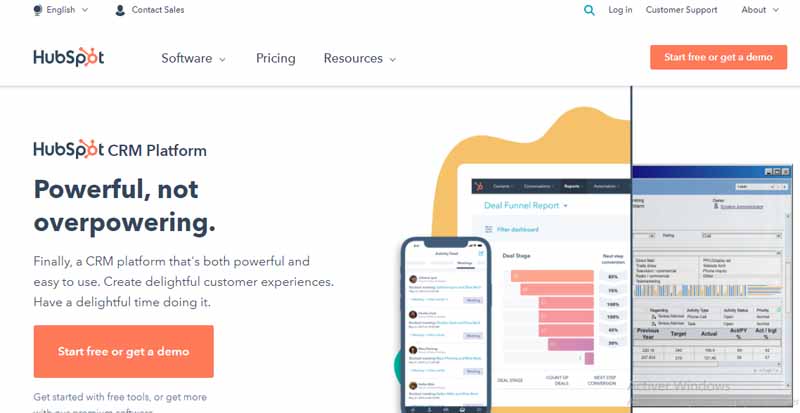
First, it is thanks to the Hubspot brand that we learned about the concept of inbound marketing.
It provides you with a best-in-class global marketing solution including separate hubs of
- email marketing tools;
- Social media marketing;
- CRM;
- Etc.
Its inbound marketing tool has several features that not only allow content to be created and shared on multiple platforms as well as social networks, but also to have the information necessary to evaluate performance.
On top of all this, Hubspot brings together magical features that allow marketers to:
- Easily gain social engagement;
- To keep social listening;
- Adopt effective subscriber management;
- To properly manage prospects;
- Implement effective content management.
It also makes it easier for the marketing team to work with workflow automation tools. We recommend finding out if they have what you need in a price plan that works for you.
8.2. Ahrefs
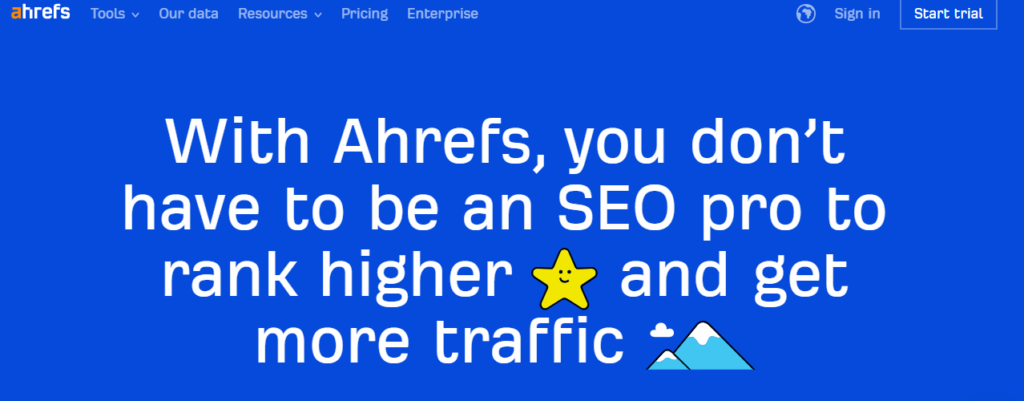
When it comes to thinking about SEO tools, Ahrefs can be called one of the most user-friendly.
In inbound marketing, Ahref can help you rank higher and increase your website traffic using in-depth knowledge of keywords as well as competing websites.
Considered the largest live backlink index, Ahref boasts the second most active web crawler after Google with a database of over 25.06 trillion known links.
For this purpose, it allows to do a well detailed competitive analysis where you can see everything, including who refers to your competitors, which are their most visited pages, in which position their content ranks.
When you are regularly informed of this data, you can find other more powerful alternatives in order to increase the traffic of your site thanks to the well-crafted SEO strategies.
8.3. Google Analytics
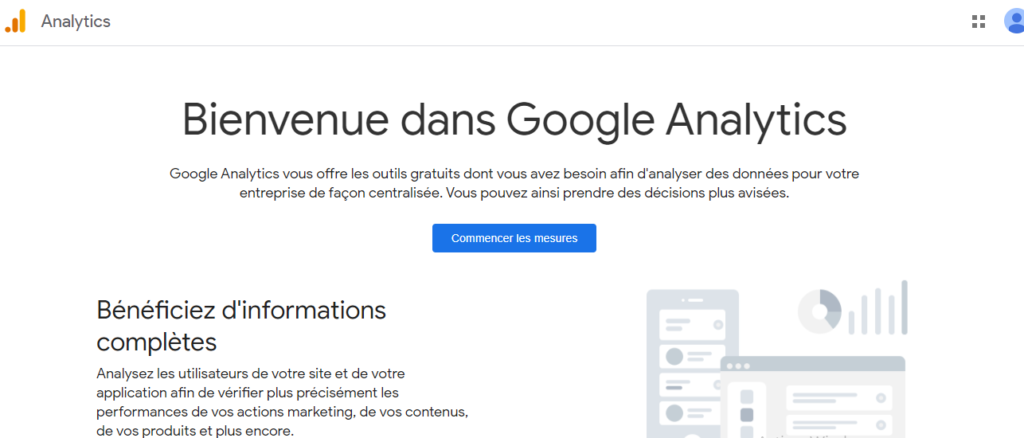
Analytics is a powerful free website analytics tool provided by Google through its comprehensive marketing space.
It gives you a general overview of relevant information about how users find and use your website such as:
- Where your visitors are coming from;
- The pages they visited;
- The pages they spent the most time on;
- The page they left;
- Etc.
Knowing the source that drives more traffic to your website allows you to prioritize certain channels for your campaigns to increase traffic.
Moreover, with this information, you can make data-driven decisions on which pages to work on.
What’s even more remarkable about Google Analytics is that it integrates with other tools, like your Google Ads account. You can also effectively analyze the performance of your ads in terms of traffic.
Google Analytics is the go-to analytics tool for all businesses analyzing website and campaign data.
Over 30 million websites worldwide use Google Analytics. It is used by B2B and B2C companies. And, there’s no reason not to.
The data provided by Google is unmatched and statistically it can show you what you need to know.
However, for B2B analytics, you may need something to go along with Google Analytics for individual visitor and lead data.
8.4. Vidyard
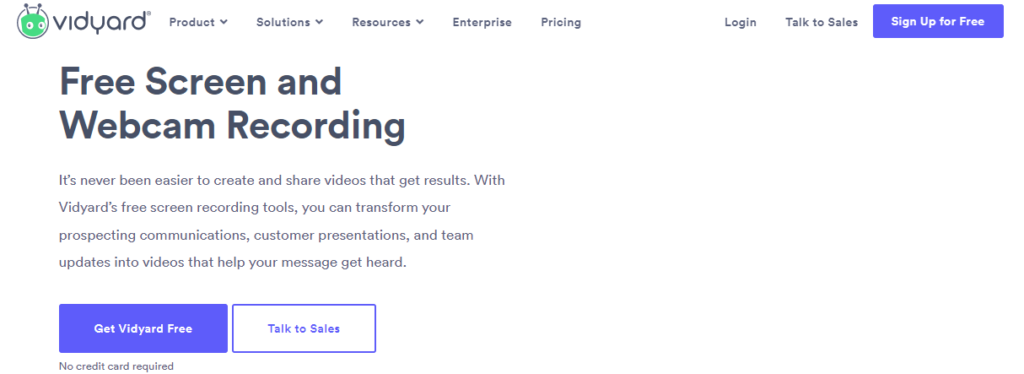
Thanks to its effectiveness in marketing these days, video is a powerful tool that dominates some others day by day.
According to the god of inbound marketing, 81% of businesses use video as a marketing tool, up from 63% from previous years.
In an effort to help marketers increase traffic to their websites, Vidyard provides a lightweight video hosting platform designed to grab users’ attention quickly.
With Vidyard, you can start adding videos to your website and campaigns with just a few clicks.
The free version allows you to upload an unlimited number of videos which are automatically optimized for sharing.
Unlike most free video hosting platforms, Vidyard has no ads, so nothing can distract visitors from your visual content.
The free version has a small Vidyard logo on the video player which can be removed if you decide to upgrade.
For faster use, you can download thechrome extension of this software which is easy to install.
This tool is quite ideal when you want to have a little communication with customers and the rest of your team. You can just email it or copy the link to share the video anywhere you like.
8.5. MailChimp
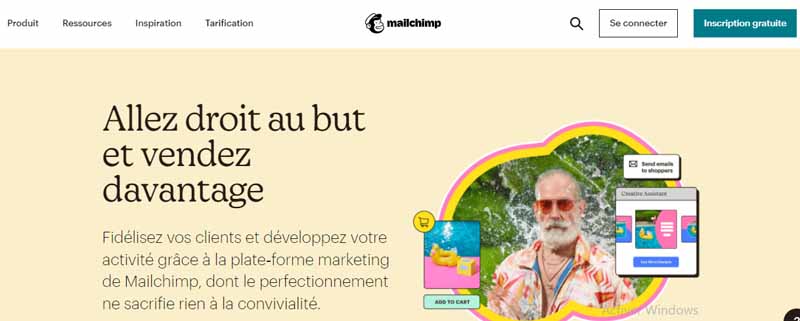
As we said before, after you get prospects’ attention, you have to nurture them.
And the most popular way to nurture leads is by emailing them content.
It’s safe to say that most of your customers probably have an email account these days, because nearly 90% of Americans over the age of 15 have an email account.
An email newsletter tool like MailChimp can do a lot of the groundwork for you.
The tool has an editing space for you to write, edit and format your content in the app and add photos or images anywhere.
Email is an effective way to share blog posts, company news, research, and special offers with your audience.
Additionally, email marketing campaigns target specific groups of customers or prospects.
8.6. Buffer
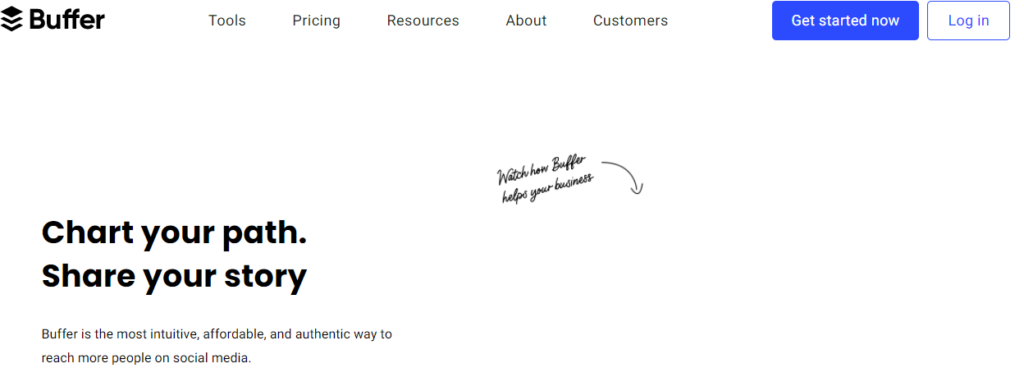
Buffer is a popular and widely used content management platform that helps you create, publish, plan, schedule, and analyze content across multiple channels.
Best known for its very simple and straightforward user interface, Buffer comes with various features to make basic cross-posting and content sharing tasks more manageable.
Rather than logging into multiple accounts and managing content individually, it lets you access all your social networks in one place.
It allows you to quickly see which of your posts are performing well, which hashtags are attracting the most, which links are being clicked on, and more.
Additionally, it offers social listening tools to check competitor activity as well.
8.7. Unbounce
Statistics have repeatedly proven that having dedicated landing pages for your winning marketing campaigns increases click-through rates as well as conversion rates.
Attractive landing pages will entice people to sign up for your programs or workshops or make any other call to action.
This is where you get leads that turn to MQLS and SQL and end up paying loyal customers.
Unbounce lets you create beautiful, easy-to-navigate landing pages that you can use for your well-designed marketing campaigns.
It comes with all the features you need to create, optimize, and even track your landing pages, including proven effective templates to make your job easier. It allows you to design beautiful and functional landing pages without any coding knowledge in a scalable way.
8.8. OptinMonster

OptinMonster is the most popular lead generation platforms in the world
It started out as a simple WordPress popup plugin. But it has evolved into a complete lead generation platform that offers much more than typical popups:
- Exit intent popups;
- Welcome mat;
- Floating bars;
- Scroll boxes;
- Several other types of opt-in forms.
You can also use OptinMonster to create page-specific popups and gamified to convert more traffic into subscribers on your website and landing pages.
Its innovative call-to-action (CTA) buttons with conversion-enhancing effects are among the top reasons why marketers prefer to use it.
OptinMonster comes with over 100 templates for all sorts of business purposes that you can customize to suit your brand.
8.9. Canva

Inbound marketing requires the regular creation of content on different social media platforms like Instagram, Facebook, Twitter, etc.
Additionally, to create engaging content, you need to create custom images and infographics that complement your content and make it more valuable.
Canva helps you achieve both of these goals with its drag-and-drop graphic design platform.
It provides you with an unlimited library of images, icons, graphic elements and templates for infographics and various types of images.
Canva is a simple and easy to use platform designed specifically for non-technical business users.
Compared to a full-time or freelance designer, it costs a fraction of the money but provides immense value to your content and social media marketing strategy.
8.10. Moz
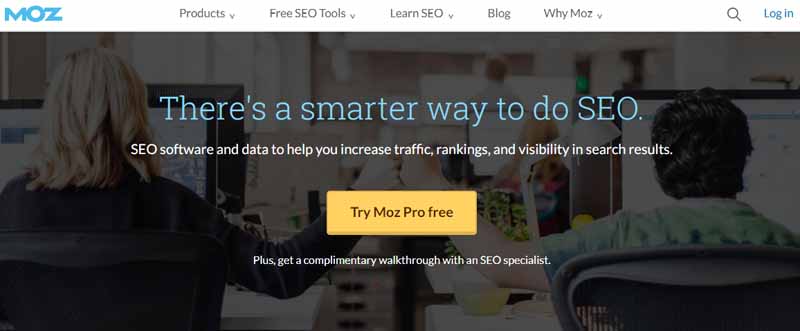
Moz is a conveniently designed SEO analysis tool that comes with a ‘MozBar’, a rich source of relevant SEO metrics that lets you track search performance.
It also offers a range of other unique SEO tools with which you can improve your visibility, such as:
- Link Explorer;
- Keyword Explorer and Rank Tracker.
The link explorer tool allows you to get a detailed profile analysis of any website, including its domain authority, embedded inbound links, and ranking keywords used.
The Keyword Explorer tool gives you tons of metrics related to search terms, with which you can optimize your web pages for SEO.
In this way, Moz provides a number of thoughtfully created tools to help you analyze competitor activity related to SEO as well.
8.11. Taboola
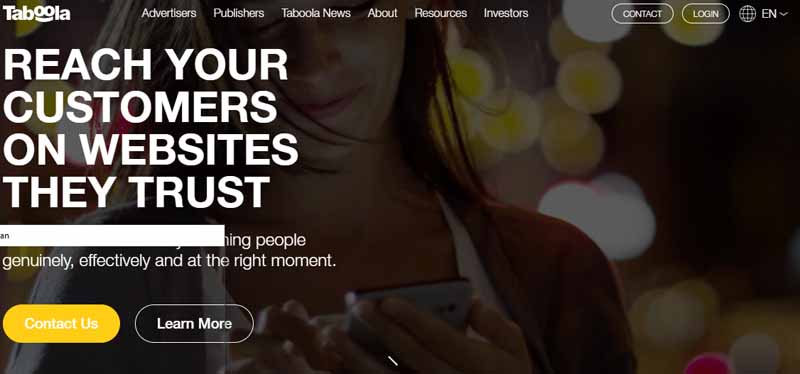
Taboola is best known for its ability to drive traffic to its clients’ websites. Acting as a content discovery platform gives you the best place to place your content and tap into a very powerful pool of customers.
It effectively reaches nearly 400 million unique visitors per month and provides features to boost brand awareness.
It allows you to gradually expand the audience of your content and increase its visibility. It also helps you build credibility with powerful content, get the word out, and invite prospects to work with you.
However, using Taboola for inbound B2B traffic can be tricky. Be sure to only use it if you think the visitors it will bring will suit you.
8.12. Outrain
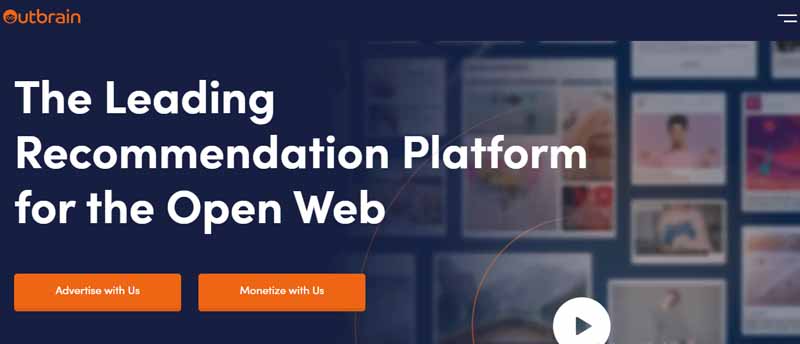
Outbrain is another third-party content discovery platform that allows users to find interesting, high-quality authors and content.
With an average reach of over 557 million people in a month, the platform offers a large visibility window for businesses, with which you can publish your content to reach a large audience.
It’s also a way to dramatically improve engagement on your content and attract more leads for your brand.
Outbrain also lets you set up campaigns where your content will appear on some of the biggest premium publisher websites on the web.
Moreover, it also provides mobile-friendly interfaces, ensuring you don’t miss any eye-catching opportunities.
Like Taboola, you also need to be careful when planning an inbound B2B campaign with Outbrain. If done incorrectly, it can lead to bad traffic.
Conclusion
Finally, we can simply note that inbound marketing has become a modern, effective and simple strategy to implement despite the size of your business.
However, before you start and carry out this strategy, you must know the advantages, the challenges and how it is done.
Fortunately, we have taken the time to give the clear details on these key points in this article.
If this article was helpful to you or you have other inbound marketing strategies, please share them with us in the comments.

